#dick van dyke plays his own character's son
Text
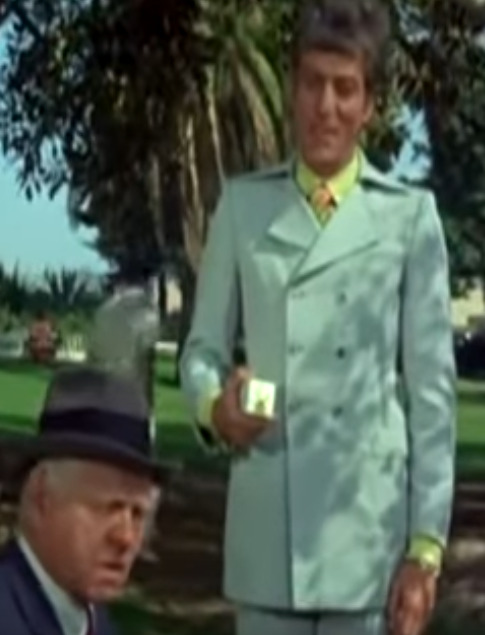
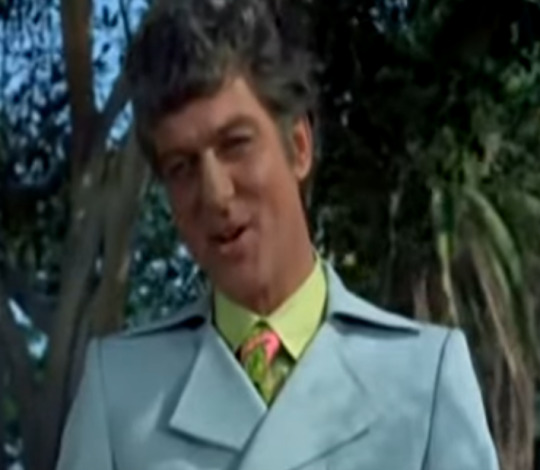
I don't know what scares me more: that wig or the color palette of his ensemble.
#oh JESUS#dick van dyke plays his own character's son#he's a gay-coded fashion designer who dresses like he stepped out of a clockwork orange#the fuck is this movie#the comic 1969
4 notes
·
View notes
Text
Vintage Shows to Watch While You Wait for the Next Episode of WandaVision - The 70s

So Friday has come upon us again and I’m still playing catch up. I’m going to spit out the list for episode 3 before watching episode 4.
1. The Monkees (1966 - 1968)

Ok, so I was real torn on the placement of this show. It’s clearly a 60s show, but the song “Daydream Believer” plays at the end of episode three giving this series a more direct link to Wandavision than most others. In the end it went here cause the 60s list was already over stuffed.
But oh how I loved the Monkees growing up. You can keep the Beetles, these were the real hotties of the 60s. Yeah they didn’t play their own instruments, but who cares, the music still sounded great and the tv show was a hilarious off the wall surreal fever dream.
2. The Brady Bunch (1969 - 1974)

Often considered the last of the classic family sitcoms, The Brady Bunch, is heavily refenced in episode 3. Right down to the house Wanda and Vision are living in.
The main gimmick of the series was of a blended family trying to learn to live together. It has over time gained a cult following and a spin off series in the 80s called The Brady Brides. (which is even funnier imho)
3. Night Gallery (1970-1973)

Rod Sterling’s spiritual sequel to the Twilight Zone. Night Gallery follows a similar format but is firmly in the horror camp as oppose the to sic-fi trappings of the latter.
4. The Mary Tyler Moore Show (1970 - 1977)

Elizbeth Olsen took great inspiration for Wanda’s character from Mary Tyler Moore and the episode three titles pay homage to this series opening credits. Other then that though there’s not much in common with Wandavision as the series is about a single woman and is firmly an office comedy not a family sitcom.
5. The Partridge Family (1970 - 1974)

The only real competitors to The Brady Bunch at the time was The Partridge Family. A music loving family that becomes a a hot band sensation over night. The series focus on juggling show business with normal small town life.
6. Good Times (1974 - 1979)
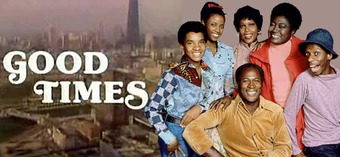
Arguably the first real family sitcom to feature an all back cast, Good Times is ironically a spin-off of a spin-off. First of the sitcom Maude which is itself a spin-off of All in the Family, a series which we will talk about later on. This series however focuses on the Evans family and their three teenaged children growing up in inner-city Chicago. The series is more topical and satirical then some of the other family sitcoms on this list but still very much following the family sitcom formula.
7. Happy Days (1974 - 1984)

Happy Days is a juggernaut cultural phenomenon that popularized coming of age sitcoms and , in the case of Wandavision, the trend of setting sitcoms in the past. The story focuses on teenaged Richie Cunningham as he tries to figure out life and growing up in 1950s America. The show lasted for a decade and spawned five spin offs, including the successful Laverne & Shirley and another series that’s on this list.
8.The Jeffersons (1975 - 1985)

“We’re moving on up!”
In honor of Geraldine/Monica landing a promotion this episode lets look at The Jeffersons. Another spin-off of All in the Family (we’re getting to it, honest) The Jeffersons took the bold move of showing a wealthy black family on American televisions. Proving that indeed tv was ‘moving on up’ from it’s measly Amos n’ Andy days.
9. Wonder Woman (1976 - 1979)

Time for the ladies to shine as well. Now there were other superhero shows on at the time, most notably Shazam, The Secrets of Isis, and The Bionic Woman, but it is the first lady of comics who has left the greatest cultural impact on society today.
10. Mork and Mindy (1978 - 1982)
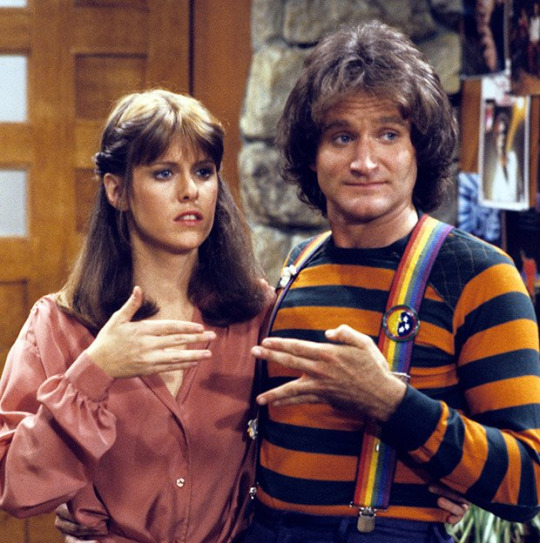
One of the many spin-offs of Happy Days, Mork and Mindy is a return to the quirky fantasy sitcoms of the 60s. It’s basically the plot of My Favorite Martian but with an added will they/won’t they love affair with two best friends. It’s also ten times funnier cause it stars the late, great Robin Williams in his first break out role.
Runner Ups
Now here’s a bunch of 70s shows to check out even tho they have little to do with Wandavision.
Dark Shadows (1966 - 1971)

My mother was aghast that I didn’t include this in the 60s list cause it was her favorite show growing up. It’s a soap opera with vampires and other classic horror monsters. Well, it went into the 70s so I guess we can put it here.
The Odd Couple (1970 - 1975)
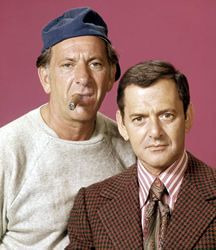
Based off both a successful stage play and later movie, The Odd Couple is about two devoiced guys rooming with each other to make ends meet. Now say it with me, “Oh my gosh, and they were roommates!”
All in the Family (1971 - 1979)

All in the Family is like the I Love Lucy or Honneymooners of its day. The series perfected and popularized the dysfunctional family trope and catapulted the formula for satire sitcoms that is still in use today with the likes of the Simpsons and King of the Hill. However it’s often mean spirited humor has little to do with Wanda’s idyllic fantasy world.
Sanford in Son (1972 - 1977)
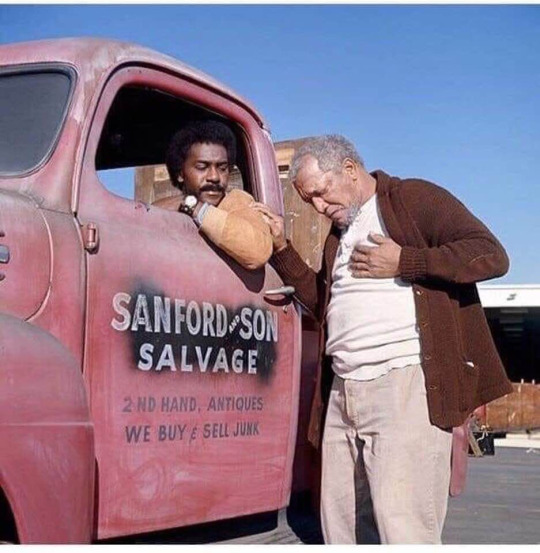
Another early satirical sitcom with a hilariously awful father, this time featuring a mostly black cast.
The Bob Newhart Show (1972 - 1977)

Kind of like the spiritual successor to The Dick Van Dyke Show, but with less physical comedy and more quips.
MASH (1972 - 1983)

Yeah, a dark comedy about the horrors of the Korean War has nothing to do with Wandavision but still worth a watch as it’s very powerful.
Mama's Family (1974 - 1984)
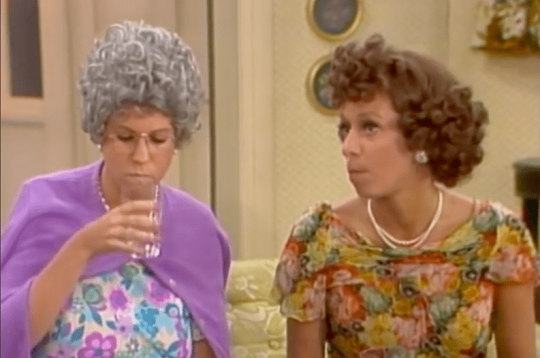
The first redneck sitcom since the cancelation of Rural-verse. However this series has a more satirical bite than those shows. Getting it’s start on the Carol Burnette Show the skit about a grouchy old southern matriarch found its way to audiences televisions as it’s own hilarious half hour comedy.
And there’s loads more I could recommend but I’m going to cut things off here to save on time and possibly those later shows will make it on to the 80s list as they’re very late 70s/early 80s.
55 notes
·
View notes
Text
Airwolf (because Ernest Borgnine is a convincing combat pilot)
youtube
(Thanks to roxette hd2)
[All images are owned by Universal. Please don’t sue me (or hurt me. I know Jan-Michael Vincent has a temper)]
In 1983, Columbia Pictures release a certain movie about an experimental combat helicopter...

(Thanks to Amazon)
...contracted to the LAPD (because military-grade combat gear in the hands of the cops could never go wrong). I don’t remember much about the film except that Roy Scheider played the pilot and his co-pilot’s name was nicknamed JAFO (which was an acronym for “Just Another Fucking Observer”)
Now, you may be wondering why I’m bringing up an obscure 80s film in a review of Airwolf. I’m getting to that.
With the success of the film, ABC green-lit a series based on the film. At the same time (whether due to Blue Thunder or just coincidence, I don’t know) CBS green-lit Airwolf and the two fought hard against each other for ratings (Blue Thunder lasted half a season while Airwolf would get 3 on CBS and a fourth on USA Network)
First, let’s meet the star of the show...

Airwolf, a cutting-edge attack helicopter with stealth mode, jet boosters (allowing it to exceed the speed of sound), and any weapon the writers can fit into the script, built for a division of the CIA known as “the Firm”, which is run by...

...Michael Briggs III (codename “Archangel”) Airwolf is stolen during her test flight, and the Firm enlists the help of...

...former Vietnam combat pilot Stringfellow Hawke (who the hell hates their kid enough to name him “Stringfellow”?), played by Jan-Michael Vincent, to get her back. Aiding Hawke in this endeavor is his mentor...

...stunt pilot Dominic Santini, played by Ernest Borgnine.
After retrieving Airwolf, Hawke and Santini hold it hostage until the Firm recovers Hawke’s brother St. John (pronounced “Sinjin”; The Hawkes must’ve REALLY hated their kids), who is a POW in ‘nam. Archangel agrees and shelters Hawke from the government in exchange for flying missions in the Firm’s interest (sure, why not?)
This premise lasted 3 seasons until CBS cancelled the series, only to have USA Network pick it up (with a much smaller budget)
youtube
(Thanks to LegitGrantham20)
The entire cast is written out, with a new cast taking their place. The pilot for Airwolf is now...

...St. John Hawke, played by Barry Van Dyke (son of Dick Van Dyke, best known as Dick Van Dyke’s character’s son in Diagnosis Murder) St. John’s partner is...

Jo Santini, Dominic’s niece, who took over her uncle’s business after he’s killed when his helicopter explodes (the same explosion critically injures Stringfellow, effectively writing him out as well) Rounding out the team, we have...

...Jason Locke, who became Airwolf’s handler after Archangel was reassigned. Naturally with St. John back safely, Team Airwolf becomes officially part of “the Company” (which was the old-time code-word for the CIA), since the Firm was dissolved between networks.
The producers lost access to the “Airwolf” helicopter in the transition, so all of the shots of Airwolf were taken from the first three seasons (the ground-level Airwolf was merely a prop)
If you would like to watch the series, it’s available on RokuTV. If you would like to see an episode reviewed, please let me know!
5 notes
·
View notes
Text
Another Pointless Top Ten List (But You’ll Keep Reading, Anyway)
My brother Rikk recently mailed me another top ten list of his, in this instance being his top ten favorite TV comedy shows (which he defines as 30 minutes or less, no movies).
The Three Stooges
M*A*S*H
The Andry Griffith Show
The Beverly Hillbillies
Hogan’s Heroes
I Love Lucy
The Honeymooners
All In The Family
Get Smart
Gilligan’s Island
His honorable mentions include F Troop, The Patty Duke Show, My Three Sons, Gomer Pyle USMC, Batman, Petticoat Junction, Mr. Ed. Bewitched, and I Dream Of Jeanie.
Again, one of those personal favorite lists that you really can’t argue with because it reflects personal tastes and / or fond nostalgia (though I am calling shenanigans on The Three Stooges; they were theatrical shorts shown in movie theaters, not a TV show, and besides, Laurel & Hardy are soooooo much better…).
But of course we’re going to play the game, so I’ll respond, first throwing in a caveat: No skit comedy shows such as Monty Python’s Flying Circus, The Marty Feldman Show, Benny Hill, Second City TV, The Kids In The Hall, or Love, American Style.
I’m also omitting programs like The Gong Show and Jackass because while hilarious and under 30 minutes, they weren’t scripted or story driven.
So here’s my list:
The Dick Van Dyke Show -- the sitcom art form at peak perfection. Carl Reiner’s insight into what writing for a mercurial TV star is like (in his case, Sid Caesar on Your Show Of Shows, for Van Dyke’s Rob Petrie it was Carl Reiner as Alan Brady). If you’ve never seen the show, start off with their two best episodes, “Coast To Coast Big Mouth” and “October Eve” (though they’re all good). “October Eve” is the one where Sally (Rose Marie) finds a nude painting of Laura (Mary Tyler Moore playing Dick Van Dyke’s wife) in an art gallery. SALLY: “There’s a painting here you should know about.” LAURA: “If it’s what I think it is, I can explain.” SALLY: “If you need to explain, it’s what you think it is.”
The Mary Tyler Moore Show – this is the first American novel for television. It’s a novel of character, not plot, and it traces the growth of Mary Richards, a 30 year old woman-child who realizes she needs to grow up, as she blossoms into a mature, self-reliant adult. You can select two episodes at random and by comparing her character growth determine not only which season they were filmed but when in that season.
I Love Lucy -- eking out a bronze medal for its longevity and pioneering of the art form. The first sitcom shot on film, it led the way in the rerun market. Not just a historical icon but consistently funny.
WKRP In Cincinnati -- as crazy as a sitcom could get and still be within the realm of plausibility. Never loved by its network, they bounced it around for four seasons until it faded away (it made a syndicated comeback a decade later, of which we shall not speak). Great supporting staff, dynamite writing. While they never steered away from serious subject matters (such as an actual rock concert tragedy in Cincinnati where several fans were crushed when rushing the stage), they will be forever and justly remembered for the beloved “Turkey Drop” episode.
Fawlty Towers – only two seasons and a mere 12 episodes and yet more comedic bang for the buck than anything else on this list. John Cleese as a frustrated, short-tempered, conniving hotelier practically writes itself. SYBIL FAWLTY: “You know what I’ll do if I find you’ve been gambling again, don’t you, Basil?” BASIL: “You’ll have to sew them back on first, m’dear.”
That Girl -- looking back it can sometimes be hard to judge just how groundbreaking certain shows were. Marlo Thomas as a struggling young actress finding romance and success in Manhattan seems positively wholesome today, but in the mid-1960s it was considered quite daring and progressive. The Mary Tyler Moore Show took their opening credits inspiration from Marlo Thomas’ character exploring Manhattan in the opening credits of That Girl.
He & She -- a one season wonder from 1967. Another daring and progressive show for its era. Richard Benjamin and Paula Prentiss played a young married couple, he being a cartoonist who drew a superhero strip (the actor playing the superhero on TV in the series was Jack Cassidy at his manic best). Another show with a dynamite supporting cast…and just too hip for the room at the time (honorable mention to Love On A Rooftop, a similar show from the previous season that also proved too advanced for audiences at that time).
Green Acres -- started out silly but quickly took a turn into the surreal, breaking the fourth wall, commenting on the opening credits as they ran by, all sorts of oddball stuff. Dismissed as a hayseed comedy, the truth is the supporting cast possessed dynamite comedic chops and their sense of timing is a joy to behold. Forms a loose trilogy with The Beverly Hillbillies and Petticoat Junction since all three referenced the same small towns of Hooterville and Pixley as well as occasional crossovers (honorable mention to the first season of Petticoat Junction which is as pure an example of Americana as one could hope to find and could easily be distilled into a feature film remake).
The Young Ones -- another two season / twelve episode wonder from the UK. Four stereotypical English college students go through increasing levels of insanity as the series progressed. Unlike most shows of the era where there was no continuity episode to episode, damage done in an early episode would still be seen for the rest of the series. (They also would simply end a show when they ran out of time, not resolving that episode’s plot.) Their random / non sequitur style proved a tremendous influence on shows like Family Guy.
Fernwood 2 Nite / America 2-Nite -- a spin off from the faux soap opera Mary Hartman, Mary Hartman, this presented itself as a cable access variety show for Mary Hartman’s hometown of Fernwood. With Martin Mull as the obnoxious host, Fred Willard as his incurably dense second banana, and TV theme song composer Frank De Vol as the band leader. Because it’s so rooted in 1970s pop culture it doesn’t age as well as some other shows on the list, but many of the gags still land solidly today. For the second season the show-within-a-show went nationwide and became America 2-Nite. Very funny, very well written, and all the more remarkable because these guys were doing five episodes a week!
Okay, so what can this list tell us?
Buzz is old. Like really, really, really old.
Buzz stopped watching sitcoms in the mid-1980s.
There’s a reason for that. By that time I was writing for TV and trying to get my own work done. I didn’t have time to sit and watch TV on a regular basis (still don’t), and too often I could see the gears turning and guess where the episode was heading by the end of the first scene (still do).
I’ve veered away from “must watch” TV, especially shows that require the audience to keep track of what’s gone on before.
Tell me I have to see the first six seasons of a show to appreciate what happens in the seventh and you’ve just lost me as a potential viewer. I’m strictly a one & done kinda guy now (though I will binge watch if a mini-series has a manageable number of episodes, say six).
My list represents a time capsule for what caught my interest and attention during a very formative period of my life, i.e., from the early 1960s as I became more and more aware that writing was where my future lay, to the mid-1980s when I hit a good peak stretch.
I don’t doubt there are great and wonderful hilarious comedies out there that I haven’t seen, I’m just listing what I have seen that did make an impression on me.
Your mileage may vary.*
© Buzz Dixon
* It should vary! Be your own person!
8 notes
·
View notes
Text
‘MY GOOD WIFE’ v ‘MY FAVORITE HUSBAND’
June 23, 1949

"My Good Wife," an added starter on KNBC, 6:30 p.m. PST Fridays, is another comedy about a young married couple, as if we needed another one. I must admit this one is a little different. This married couple, Steve and Kay Emerson, are not nearly so fast with a wisecrack as, say, Lucille Ball and her husband on "My Favorite Husband," 9:00 p.m. PST the same night on KCBS. Great night for matrimony, Fridays, and if those two programs don't provide enough for you, tune in Dorothy Dix at 1:45 pm. (not broadcast in west). She'll tell you how to win back an erring husband.
I haven't yet made up my mind whether the Emerson's ineptness at repartee is deliberate - after all, not every young wife talks like Groucho Marx - or whether the script writer isn't very good at it either. Anyhow, whether by accident or design, the Emersons are a very restful young couple, possibly a little too restful to get anywhere in the entertainment world. In radio, they're a real novelty.
As a wife Arlene Francis who plays Kay Emerson, wins out on points over Lucille Ball In other regards - talent and looks, for example - Miss Ball is way out front. But how long could you live with a girl who says: "Oh, we don't miss television. I climb in the Bendix and sing and George looks at me through the little window." Imagine having a girl around the house who said things like that before breakfast. It'd curdle the milk.
STARTS OFF FAST
“My Good Wife" started out at a gallop two weeks ago, NBC deciding to set the stage and get everything out of the way all at once. The first program resembled one at those synopses of previous in installments in the popular magazines. Steve met Kay, quarreled with her, married her, taught her how to drive, learned he was about to become a father, and became one - all in 15 minutes. One minute later, the dialogue went like this:
"It doesn't seem like we've been married 12 years."
"We've been married 10 years."
"Well, that's why it doesn't seem like 12."
That, incidentally, Is a little brighter than the conversation around the Emerson household generally gets.
On the second show of the series, the pace settled down to a walk. During the first few minutes the Emersons and their neighbors lay lazily on the grass, not even talking very much. This may be taking realism too far. I mean there ought to be some crickets chirping or something. Things quickened a bit later when Mrs. Emerson decided she was going to help her husband out with his law practice and, of course, messed things up.
YALE, NO LESS
The Emersons are quite upper middlebrow as radio's young married folk go. He went to Yale, for heaven's sake, and she not only went to Vassar but led the daisy chain or whatever they do with that daisy chain. What is this - counter revolution? Oh, yes, they live in Larchmont up to their ears in other upper middlebrows. I don't know what else to tell you about the Emersons except they sound like a nice young couple to have over for a drink some time but conceivably a little mild to entertain you much on the air.
My favorite young married couple is still Ozzie and Harriet Nelson - I put Goodman and Jane Ace off in another category entirely - and while we're chatting about this sort of thing, I ought to point out Ricky and David Nelson, Ozzie and Harriet's children, are now playing themselves on that program which solves a lot of problems. I have a spy in the Nelson household, named - in case any congressional ears are pricking - Harriet Nelson, nee Harriet Hilliard, and she is not now and has never been a Communist nor worked on the atom bomb nor designed the B-36.
Anyhow, my spy informed the Nelsons had a little trouble with the kids. The real Ricky and David I listened to the radio Ricky and David and discovered them doing things they weren't allowed to do or wouldn't do voluntarily if they were allowed. Being children, they got confused over their own identities. Well now the real Ricky and David are the radio Ricky and David and the split personalities in the kids has been averted. You run into a lot of funny problems in radio.
# # #
FOOTNOTES FROM THE FUTURE

It seems pretty clear that NBC was counter-programming CBS’s “My Favorite Husband”. Not only are the names very similar, they were scheduled on the same night, as critic Crosby points out.

The episode of “My Favorite Husband” described above might apply to any domestic sitcom, but was actually titled “Budget - Mr. Atterbury” broadcast June 3, 1949. However, this newspaper is still calling Lucille Ball’s character Liz Cugat, when her name had changed to Liz Cooper in January 1949, to avoid comparison with the well-known bandleader (no, not Desi Arnaz).
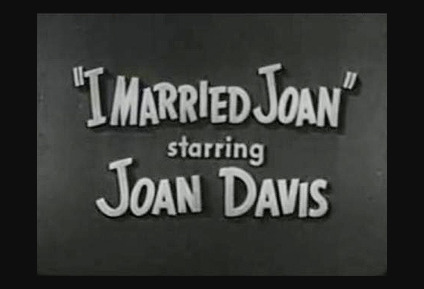
Counter-programming by NBC would not stop on radio. When “I Love Lucy” was a juggernaut hit for CBS TV, NBC created a similar show titled “I Married Joan” for star Joan Davis. It was billed as “The adventures of the scatterbrained wife of a respected city judge.” Substitute “bandleader” for “Judge” (played by Jim Backus) - and you’ve got “I Love Lucy.” Like Ball, Davis was a film star of the ‘30s and ‘40s getting aboard the TV bandwagon. Like Lucy, Joan wanted to be in showbusiness. Many of the same situations that Lucy got into, Joan did too. The series even featured a few “I Love Lucy” refugees: Jerry Hausner, Elvia Allman, Bob Jellison, Margie Liszt, Shirley Mitchell, Ross Elliott, and many others. "Lucy” and “Joan” even employed the same director in each show's first season, Marc Daniels. "Joan” lasted three seasons, from 1952 to 1955 and is all but forgotten today.
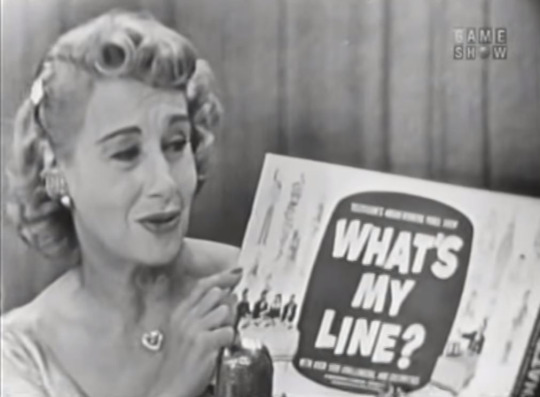
Kay Emerson was not the first domestic radio role for Arlene Francis. In 1940, she took over the role of Betty on “Betty and Bob”, which had been the first successful soap opera. She was one of the hosts of the quiz show “What’s My Name?” beginning in 1938. The show was seen as a model for TV’s “What’s My Line?” which premiered in 1950. Francis would stay with the show for its entire run, including six mystery guest appearances by Lucille Ball.
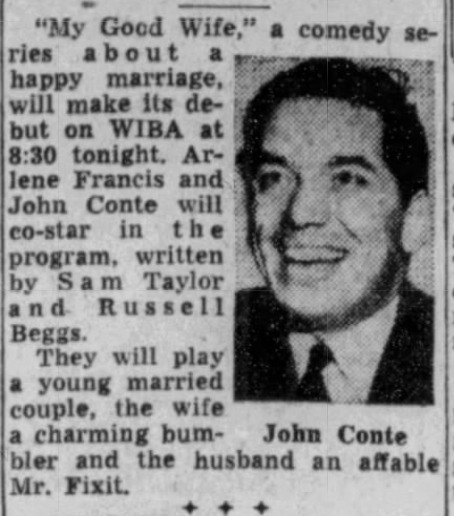
The husband to “My Good Wife” was played by John Conte. From 1944 to 1946 he was married to Marilyn Maxwell (1944-46) who would later appear with Lucille Ball in the 1963 film Critic’s Choice. He had also been seen with Ball (and Maxwell) in As Thousands Cheer (1943). In 1960 he would work for Desilu in an episode of “The Untouchables” (1960).
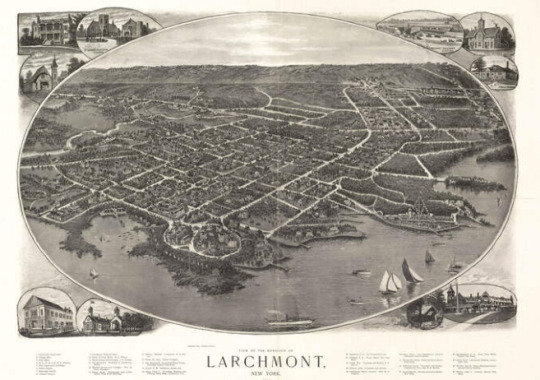
Unlike “My Favorite Husband’s” mythical mid-Western Sheridan Falls, the Emerson’s livid in the real New York suburb of Larchmont, an affluent village located within the Town of Mamaroneck in Westchester County, New York, approximately 18 miles northeast of Midtown Manhattan. Nearby was the town of New Rochelle, whose most famous fictional resident was Rob Petrie on “The Dick Van Dyke Show” (filmed at Desilu Studios). Danfield, New York, another fictional town in the area, was the residence of Lucy Carmichael and Vivian Bagley for the first three seasons of “The Lucy Show.”

“My Good Wife” began airing in June 1949, and by April 1950 was nowhere to be found. In October 1949, Billboard reported on a new NBC Gallup Poll that placed the show dead last - with 32 stations voting it poor and only 8 saying it was excellent. The future of “Wife” was bleak. The sitcom was cancelled after 18 weeks to make room for the new Jimmy Durante show. Meanwhile, Ball’s “Husband” (on CBS), thrived. Coincidentally, the show was initially a replacement for Red Skelton’s show. Skelton and Durante had both worked with Ball on films.
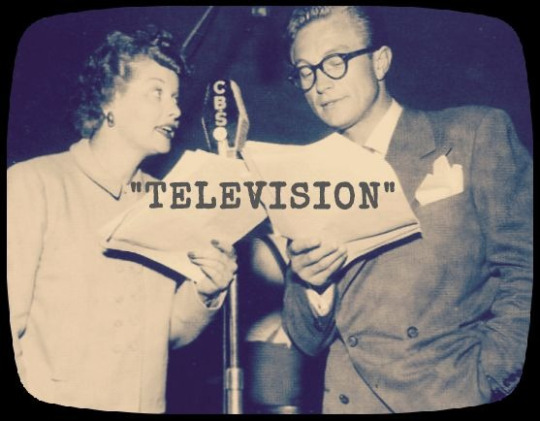
Crosby’s quote from “My Favorite Husband”
"Oh, we don't miss television. I climb in the Bendix and sing and George looks at me through the little window."
was spoken by Lucille Ball in the episode titled “Television” on June 17, 1949. A Bendix is a brand of front-loading washing machine. The porthole-like window was similar to the size screen of early television sets.

Crosby’s observation that Liz talks like Groucho Marx is attributable to the show’s writers Bob Carroll, Jr., Madelyn Pugh, and Jess Oppenheimer. And let’s not forget that Lucille Ball acted opposite Groucho Marx in Room Service (1938)!
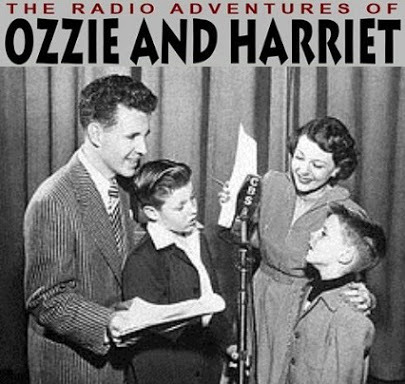
After making the obvious comparison to “My Favorite Husband,” Crosby lets readers know that neither “Husband” nor “Wife” will ever displace “The Adventures of Ozzie and Harriett” in his domestic dome. The show launched October 8, 1944 and a total 402 radio episodes were produced. When it was optioned for television, it was upstart network ABC that made the sweetest deal to the Nelsons.
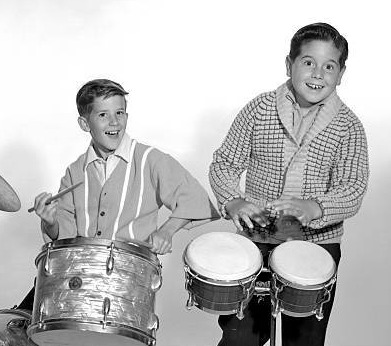
As Crosby alludes to, their real-life sons, David and Ricky, did not join the cast until the radio show's fifth year. The two boys were played by professional actors prior to their joining because both were too young to perform. Crosby’s allegations of possible identity crisis due to watching their parents with other sons on television, might easily apply to “I Love Lucy”, where the real-life Desi Arnaz often lived in the shadow of the young actors playing Little Ricky on television. Mrs. Ricardo and Mrs. Arnaz giving birth to both boys on the same day only added to the confusion - one that still lingers today.
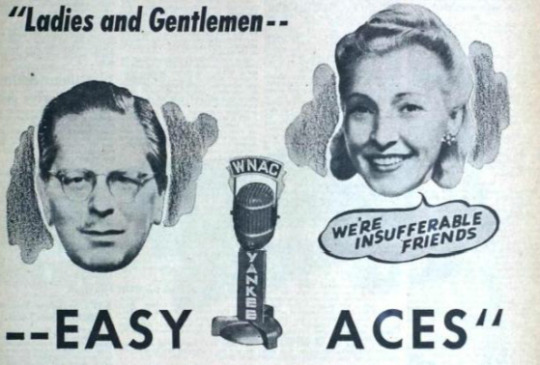
Crosby declines to compare the aforementioned shows with the popular Goodman and Jane Ace. The real-life marrieds had a show titled “Easy Aces” Goodman Ace cast himself as a harried real estate salesman and the exasperated but loving husband of the scatterbrained, malaprop-prone Jane ("Time wounds all heels"). “Easy Aces” became a long-running serial comedy (1930–1945) but did not make a graceful transition to television, lasting only a few months on the ill-fated DuMont Network. Coincidentally, Martin Gabel, who married Arlene Francis in 1946, had a recurring role on “Easy Aces” during the 1930s.
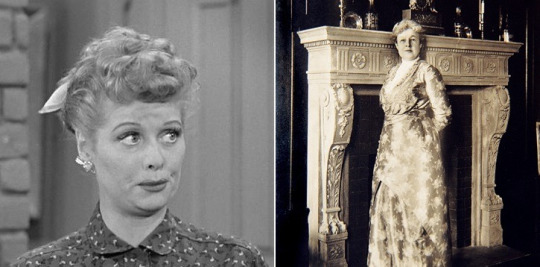
In a more sarcastic shout-out, Crosby mentions capping off this slew of domestic dithering by listening to Dorothy Dix. Author Elizabeth Meriwether Gilmer (1861-1951) was widely known by the pen name Dorothy Dix. As the forerunner of today’s popular advice columnists, Dix was America’s highest paid and most widely read female journalist at the time of her death. Her advice on marriage was syndicated in newspapers around the world with an estimated audience of 60 million readers. Naturally, radio was not neglected, getting their Dix fix when her column took to the airwaves. Due to Lucy’s insistence on interfering in the Mertz’s personal affairs, Ricky compares Lucy to Dorothy Dix in “Fred and Ethel Fight” (ILL S1;E22) on March 10, 1952.
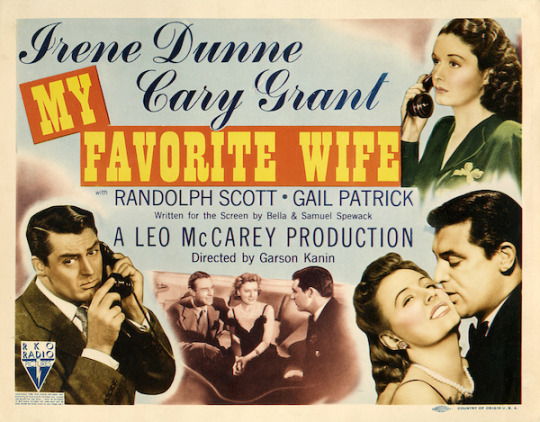
We haven’t yet mentioned this 1940 gem, but we’ll save that for another time!
#My Good Wife#Arlene Francis#John Conte#My Favorite Husband#Lucille Ball#radio#1949#I Married Joan#John Crosby#Dorothy Dix#Ozzie and Harriett#Easy Aces#Groucho Marx#Desi Arnaz Jr.#Larchmont NY
2 notes
·
View notes
Text
Another Top 10 Male TV Characters (In no particular order)
I posted something like this before but I added some favorite characters and I had to get my feelings down in writing :) You can read my other post, but in summation, the characters I mentioned before were: Gilbert Blythe, Lenny Bruce, Logan Echolls, Mike Wheeler, Steve Harrington, Shawn Spencer, Burton Guster, Stanley Barber, Luke Danes, and Jim Hopper.
Pacey Witter (Dawson’s Creek)
I’ve found that my top 3 favorite male characters have something in common. They’re all funny men with a deep sadness underneath. Logan Echolls, Gilbert Blythe, and Pacey Witter. Pacey is such a kind guy. He is so caring and comforting. He is also so funny, snarky, and sarcastic. But then there is that vulnerability that he has and it’s so appealing. Pacey is this strange combination of complete confidence but also having a strong streak of insecurity. There’s this scene in season 1 where Pacey opens up to Joey and tells this story of how when he was 8 years old he lost a game of baseball and his father yelled and screamed at him and called him a disgrace. The next day he overheard him tell Pacey’s brother about the events and his father said “at least I have you.” The way that Joshua Jackson delivers that is so heartbreaking and makes you want to give him a hug. Joey and Pacey are far and above the most entertaining and interesting characters in all of Dawson’s Creek.
Jim Halpert (The Office)
Jim is such an important part of The Office in my opinion. He's the type of character that all those mockumentaries need. There are so many crazy characters and they need some normal characters that you can relate to. Yet Jim is also far from boring. He's hilarious and an extremely entertaining part of the show. Also John Krasinski is the freakin best :)
Ben Gross (Never Have I Ever)
Ben Gross is another character like Logan and Pacey who is funny and yet also has a deep sadness beneath all of it. You really don't start the season feeling too much sympathy for his character. Though I don't believe it's right to demonize Ben more than Devi. When the show starts they are very antagonistic to each other and they both say hurtful things to each other. But when Ben starts caring about Devi, he does not look back. Ben would do anything for her, even drive in bumper to bumper traffic even though he's terrified of it. In episode 6, we see Ben's home life for the first time. That's when collectively so many people started to feel immeasurably sad for Ben. He puts forth this facade at school, but we find he just a sad and lonely boy who deserves all the love in the world.
Nick Miller (New Girl)
Nick Miller is iconic. There's a reason that he was trending on Twitter 9 years after New Girl began and 2 years after it ended. I could never find the reason he was trending aside from the fact that he some classic and iconic lines and a lot of people are discovering the wonderful world of loving Nick Miller. Nick is an absolute gem and in my opinion the best character in New Girl.
Maxwell Smart (Get Smart)
Maxwell Smart is such a deservedly beloved TV character. Max and Get Smart are so important. So many of Max's lines have entered the English lexicon and taken on lives of their own, such as "Would you believe...," "Missed it by that much," "Sorry about that Chief," and "I asked you not to tell me that." He's hilarious and no can play him as well as Don Adams.
Lucas Sinclair (Stranger Things)
Lucas is such an underappreciated character. On Youtube there is next to no tributes to his character. He's always been amazing but season 3 really brought him up to a new level for me. Lucas saved the day at the end of the season. I would also say that El's humanity and how she got through to Billy helped save the day. But it was Lucas' idea to use fireworks on the monster and that was huge. Plus he had the heroes entrance. When they reveal who is throwing the fireworks and Lucas says "Flay this, you ugly piece of shit!!" It's a truly iconic line for an iconic character. Actually Lucas continually saved everyone's asses in Season 3. Also he's so funny... especially in season 3. I feel like the writers did a good job of shining a light on Lucas and giving a lot more to do. I love that we got to see Mike and Lucas' friendship as well, we've heard so much about it in past seasons, but to finally see the friendship in action was supremely important.
Dustin Henderson (Stranger Things)
Dustin is a precious ball of sunshine and must be protected at all costs. He has the sweetest smile and the kindest heart. He’s also a literal genius. If your ever in a bad mood just google his name it’s just what you need to brighten your day :) Side note. Gaten is a comedic genius already!!
Winston Bishop (New Girl)
Winston Bishop AKA Prank Sinatra!!! Lamorne is such an amazing addition to New Girl. There are so many classic Winston moments, like his love of “puzzling.” His inability to do a prank without going way overboard or not going far enough. I also love the scene where he gets the glasses that counteract his color blindness, his excitement at seeing different colors for the first time is so pure!!
Jerry Helper (The Dick Van Dyke Show)
Jerry Helper is such a dynamic person and a lot of that is thanks to the fact that Jerry Paris (who plays him) is so dynamic. I think the saddest thing about TDVDS is that Jerry had less of a big part of show as it went on, because Jerry Paris became the main director of the show. It was his dream to be a director, so i’m happy for him, but it just means that he directed more of the episodes and acted in less of them. Jerry and Millie were perfect for each other, they were both such entertaining people and I loved their relationship on the show. In a lot of shows there’s always the token couple who seems to hate each other and fight bitterly. Jerry and Millie were the type of couple who fought all the time, but the unique part is they truly love each other as well. The way it’s written you get the impression that they fight passionately but they also make up passionately.... do I need to write Jerry and Millie fanfiction? I think I do ;) Side note: were Jerry and Millie the first couple on TV to go to marriage therapy? I feel like they were, which is another way that The Dick Van Dyke Show was ahead of it’s time.
Arthur “The Fonz” Fonzarelli (Happy Days)
The fucking Fonz!!!!! Icon!!!!! I don’t think there has ever been a more iconic character in all of television. It’s been said that after The Fonz talked about getting a library card in an episode the amount of library cards being issued spiked dramatically. Supposedly the library association said that it spiked by 500%, whether or not that exact amount is correct, it points to just how popular The Fonz was. His leather jacket is in The Smithsonian museum. But the The Fonz is not just cool, he’s also an extremely interesting character. Sadly he was abandoned by his father and by the sounds of it also his mother. He was largely raised by his grandmother since the age of 6. He dropped out of high school and he joined a gang. Fonzie is an incredible man and he adopted a son out of wedlock because he wanted to give a kid a better childhood than what he had. He truly was a symbol of kindness and he was the coolest fucking character to ever exist. He was a proponent of civil rights and advocate for people with disabilities, and he even learned sign language so that he could communicate with a woman who was hearing impaired. Henry Winkler was nominated 3 times for that role. Since then Henry has gone on to other amazing roles. He had a part in Arrested Development, he plays Jean Ralphio’s father in Parks And Recreation. And most recently he finally won a much deserved Emmy for his role in “Barry.”
#top 10 favorite male tv characters#pacey witter#dawson's creek#joshua jackson#jim halpert#the office#john krasinski#ben gross#never have i ever#jaren lewison#nick miller#new girl#jake johnson#maxwell smart#get smart#don adams#lucas sinclair#stranger things#caleb mclaughlin#dustin henderson#gaten matarazzo#winston bishop#lamorne morris#jerry helper#the dick van dyke show#jerry paris#the fonz#fonzie fonzarelli#happy days#henry winkler
26 notes
·
View notes
Photo

Character Actor
Ronald Ralph Schell (born December 23, 1931) Film and television actor, stand-up comedian, and voice actor. He appeared on the May 28, 1959, episode of the TV quiz program You Bet Your Life, hosted by Groucho Marx. Schell demonstrated a comic barrage of beatnik jive talk. As a stand-up comedian, he first developed his act at the hungry i nightclub in San Francisco, California. Schell is probably best known for his 1960s television role as Duke Slater in Gomer Pyle, U.S.M.C.
In his role as Duke Slater on Gomer Pyle, U.S.M.C., Schell's character was cast for three seasons as a Marine private and best friend of Gomer Pyle. Schell left for a season to star as a disc jockey in his own sitcom, Good Morning World. He then returned to Gomer Pyle, U.S.M.C. as a corporal for its fifth and final season. Schell played Duke Slater as an urban, streetwise character, compared to Pyle's rural, bucolic character, as portrayed by Jim Nabors. Returning as a corporal, Slater acted more as a mediator between Pyle and Sgt. Carter, portrayed by Frank Sutton, than as a buddy to Pyle.
Schell lent his voice to "Jason" on the animated series Battle of the Planets and co-starred as "Mr. Brown" on The Mouseketeers at Walt Disney World.
His other television credits include The Andy Griffith Show, The Patty Duke Show, Phil of the Future, Yes, Dear, The Wayans Bros., Step by Step, Coach, The Golden Girls, 227, Saved by the Bell, Empty Nest, Mr. Belvedere, Santa Barbara, Trapper John, M.D., Too Close for Comfort, The Brian Keith Show, The New Temperatures Rising Show, The Love Boat, Love, American Style, Alice, Mork & Mindy, Down to Earth, One Day at a Time, Charlie's Angels, The Dukes of Hazzard, Sanford and Son, Emergency!, Happy Days, Adam-12, The New Dick Van Dyke Show, That Girl, Black Sheep Squadron, and Jessie.
Schell's gradual ascendency into the public's attention earned him the title "America's Slowest Rising Comedian".
Schell also acted in a few Pacific Southwest Airlines commercials such as "Smile Inspection" and "PSA Gives You A Lift Pageant". At the end of a Jerry Lewis PSA jingle, a voice said "That was Jerry Lewis for PSA, and this is Ronnie Schell. What did I do wrong?" Schell was the voice for the hockey puck-shaped character on the Peter Puck cartoons, which aired during televised National Hockey League games in the 1970s. From the mid to late 1980s, Schell appeared in numerous television commercials for Shakey's Pizza. IWikipedia)
4 notes
·
View notes
Text
Carl Reiner: Write What You Know
When I was a student at Columbia College Chicago, I had a Studies in Television class about The Dick Van Dyke Show. What follows is the essay I wrote for my final paper about its creator, the recently passed comedy legend Carl Reiner. It’s about 1,700 words. I hope you’ll enjoy reading it.

I have been a fan of the work of Carl Reiner for a long time – longer than I had, until recently, realized. I had never noticed before that he was the director of such movies as Oh God!, as well as the early films of Steve Martin (not all of which I have seen, but I have enjoyed those that I did see). And even before I knew who Carl Reiner was, I was a fan of the work of his son Rob Reiner. I watched All in the Family long before I had ever seen an episode of The Dick Van Dyke Show. And The Princess Bride, a classic of the fantasy-adventure genre, remains one of my all-time favorite films. Later on, when I began watching The Dick Van Dyke Show, I did not immediately realize that the actor playing Alan Brady was in fact the creative genius behind the entire series. I did not notice that this one man scripted the bulk of the episodes, including many of its best. I had not yet come to fully appreciate the talent and brilliance of Carl Reiner. That is something I have only achieved through this course. I have a new respect and admiration for the man, truly one of the great comedians of our time. The series he created has been a favorite of mine since I discovered it through reruns on Nick-at-Nite and will remain one of my favorites for as long as I live. I will examine Carl Reiner’s various roles throughout the production of The Dick Van Dyke Show and show that this actor turned writer-producer was truly a force to be reckoned with in the field of comedy.
When I began watching The Dick Van Dyke Show, I slowly became more familiar with the work of the cast and crew of the series. Once I had learned who Carl Reiner was – the creator of the series as well as its chief writer and producer – I discovered his early work on Your Show of Shows. I knew, for the most part, who Sid Caesar was. I was probably most familiar with him from the classic comedy film It’s a Mad, Mad, Mad, Mad World – which also featured Reiner in a small role as an airport control tower operator. I knew of Imogene Coca and Howie Morris – the latter more from his cartoon voice over work. I had never seen the show, but I knew it was a landmark television series, essentially the Saturday Night Live of its day. I’ve since learned that it was Reiner’s experiences on this series and with the people that have worked on it that formed the basis for The Dick Van Dyke Show. It was through Your Show of Shows that Reiner began a long lasting friendship and professional partnership with the great Mel Brooks, who I should not have been surprised, was the inspiration for the human joke machine that is Buddy Sorrel. Reiner was primarily a performer on the show but eventually became an uncredited contributor in the writers’ room. However, his alter ego on The Dick Van Dyke Show would be the series’ head writer, an embellishment that I’m sure delighted Reiner to no end.
It is the creation of this series and Reiner’s alter ego Robert Petrie that most impresses me about the man. Trying to break into the arena of television sitcoms, unable to find a vehicle fitting of his talents, Carl Reiner took it upon himself to create his own series – partially at the urging of his wife Estelle. Reiner believed in the old adage “write what you know” and thought about what experiences he could draw upon that others might not. It occurred to him to base his series on his life and career as a performer and writer on Sid Caesar’s television series. It also occurred to him to not only draw upon his professional life, but his personal one as well, and show the two worlds his main character would inhabit: the world of his job as a television writer and his world at home as a husband and father. Reiner then proceeded with the unprecedented endeavor of writing thirteen complete episodes for this series in a single summer. It is this feat of dedication and productivity that most inspires and encourages me. It shows what a creative individual can accomplish when he or she sets his mind on a task, a goal, and commits to it. It remains a grand accomplishment in spite of Reiner’s initial setbacks in getting the series off the ground. Reiner’s series, dubbed Head of the Family, would make it to the pilot stage and, for at least a time, no further. It’s rather ironic that one of the biggest problems with this incarnation of the series is the performance of Reiner himself. One would think that a man would be most qualified to play himself, but apparently this was not true in Reiner’s case.
We can thank the efforts of executive producer Sheldon Leonard for salvaging Reiner’s fledgling series and setting him onto his true path, as the show’s writer and producer. It is was here that Carl Reiner truly shined. The shear workload that Carl Reiner endured throughout the first two seasons of The Dick Van Dyke Show is striking, one might even say Herculean. As producer, Reiner’s responsibilities included the supervision of casting, staging, scoring and editing of each season’s thirty some episodes, in addition to his duties as writer and story editor. Nearly two-thirds of the episodes aired in the first two seasons were written by Carl Reiner, and there was almost no episode that went completely untouched by his creative hands; many of these episodes were polished or rewritten by him as well. How Reiner was able to endure this staggering workload is nothing short of amazing, almost miraculous. However, it was not something the overworked creator could endure forever. Fortunately for Reiner, and for fans of the show everywhere, help arrived in the third season in the form of screenwriters Bill Persky and Sam Denoff. It is because of these unlikely saviors lessening his burden of responsibility that we were able to enjoy Reiner’s efforts in front of the camera as well as behind during the series’ final two seasons. It is here that Reiner was able to return to his first desire – performing – as the vain, egomaniacal, overbearing television star Alan Brady.
If Rob Petrie was the alter ego of Reiner himself, then Alan Brady represented Sid Caesar, as well as many other vaudevillian stars of early television. When one considers what kind of a man and a boss that Reiner was – he only lost his temper on set once and was a genuinely gracious person to work for – it’s a testament to his acting abilities that he delivered such a believable and hilarious performance. Alan was loud, domineering, arrogant, self-centered, often cruel, but always funny. He was the living embodiment of every big shot television star that was completely full of himself, and added a welcome dynamic to the show. As if beleaguered producer Mel Cooley hadn’t suffered enough thanks to Buddy’s constant insults, he now had his belligerent brother-in-law to contend with. But Mel was not the only target of Alan’s pompous anger. I doubt anyone on the cast avoided being walked all over by Alan, and I would say Rob suffered more than anyone. Everyone was terrified of Alan Brady, and with good reason. He held the collective destiny of our favorite characters in his hand. The threat of being fired loomed constantly overhead and led to some great comedic moments, even when the threat was idle or completely non-existent. Whether it was Rob forced to ghost doctor the lackluster play for Alan’s Broadway debut or the whole staff offering their writing services to a snail, the prospect of unemployment was never funnier. Not even friends and family were safe as Laura, Millie and Jerry were all caught in the wake of hurricane Alan.
Writer, producer, performer, Carl Reiner was at least a triple threat. Like nearly everyone in the cast of The Dick Van Dyke Show, Reiner was as multitalented and versatile as they come. Always a class act, forever striving for excellence and devoted to bringing to life “one man’s reality”, Reiner worked fervently for over five years to make the series he had created one of the best television shows ever to grace the airwaves. It is for this reason that he and Dick Van Dyke chose to end the show after its fifth season. Like any good showman, Reiner wanted to go out on a high note and leave the crowd wanting more. It may have been the end of his sitcom, but it was hardly the end of his career.
Carl Reiner would continue to be a driving force in comedy and moved on to become a writer and director of feature films, including the movie based on the novel Enter Laughing that he wrote in the late 1950s that was a precursor to his work on The Dick Van Dyke Show. He kept working in television as well and even reteamed with his former star in the 1970s for The New Dick Van Dyke Show. It was, however, not as long lived or anywhere near as successful as their previous endeavor. Reiner would also continue to work as an actor and, in fact, continues to work to this very day in both television and movies. His role as Saul Bloom in the Ocean’s 11 films was one of the highlights of that series. He has even reprised his most famous role as Alan Brady on sitcoms like Mad About You, a Dick Van Dyke Show reunion special and even an animated program titled – what else – The Alan Brady Show.
Carl Reiner has crafted a legacy that I believe will withstand the test of time, and he will be remembered as one of the giants of comedy, a true creative genius. He has certainly inspired me to continue working hard on my own creative endeavors and to commit myself to the things that I am passionate about. If I could achieve even a fraction of his success, I would be a very fortunate man indeed.
8 notes
·
View notes
Text
D-Views: Mary Poppins
Hello, everyone, and welcome to another installment of D-Views, my on-going written review series where I dive into and analyze movies from Disney’s extensive film library, and even occasionally those influenced by that library. For other reviews in the series for movies such as Frozen, Enchanted, The Little Mermaid, and Lacewood Productions’ The Nutcracker Prince, feel free to consult the “Disney Reviews” tag! And as always, if you enjoy any of my reviews, please consider liking and reblogging them!
Today, thanks to the votes cast by @karalora, @banana-9-pancakes, and @aceyanaheim, we’ll be looking at the story of a magical woman -- one who is prim, proper, and practically perfect in every way...Mary Poppins!
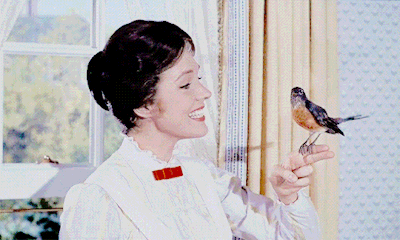
Production-wise Mary Poppins is in some ways the culmination of everything Walt Disney learned in his thirty-year-long film-making career. It adapted a classic, whimsical story as an charming, emotion-heavy screenplay, like Snow White and the Seven Dwarfs -- it featured a fresh-faced, but extremely talented young singer in the title role, like Sleeping Beauty -- it seamlessly combined animation with live action, like Song of the South -- it had state-of-the-art special effects, like 20,000 Leagues Under the Sea -- and it featured music by two songwriters who later went on to write Disney film scores for decades. But all of that started with a tiny, little spark. As a little girl, Walt’s daughter Diane had started reading the Mary Poppins books, and when Walt read along with her, he was absolutely enchanted by them and knew he wanted to adapt the stories for the silver screen. All the way back in 1938, one year after the release of Snow White and the Seven Dwarfs, Uncle Walt had his first meeting with Mary Poppins’s creator, P.L. Travers, but as anyone who has seen Saving Mr. Banks knows, the two did not see eye to eye. Uncle Walt spent the next twenty years trying to convince Travers to give him the rights to her stories, but unlike in the film where they had a sincere meeting of the minds, Travers recalled their final meeting where she gave him the rights as being more like Walt “holding up a gold pocket watch and dangling it tantalizingly in front of [her] eyes.” Admittedly one factor in the situation was that Travers herself had been having some financial trouble, and Uncle Walt’s payment for the rights to her books, as well as a portion of the gross profits for a film adaptation, was a boost that Travers severely needed. Despite the rights being given to Disney, however, Travers retained script approval rights, and for the next few years of production, she had quite a few complaints about the product. Even at the premiere of the film -- which, incredibly, she had not originally been invited to until she shamed a Disney executive into action -- Travers was very vocal about how much she disliked the film. The animation, done by some of the best in the business? Had to go. The story, which created such memorable and likable characters? Lacked teeth. The score written by the young Sherman brothers, who later went on to win awards for both Poppins and their other works? Left her cold.

Now, here’s the thing...do I agree with Ms. Travers? No. Do I like her as a person? No -- one would be hard-pressed to really admire a woman who decided to adopt half of a pair of twins from a poor family, raise the boy thinking he was her biological son, and then try to prevent her son from seeing his twin when the twin came to see him. (Yes, she really did that.) Do I think she was a malcontent who probably wouldn’t have been satisfied with anything? Absolutely. But at the same time, I must acknowledge, as a writer myself, it can be very difficult to share your creations with others. It can be hard even letting others read your works, given how personal and emotionally resonant the things you create often end up being, but it’s even harder letting others add onto your work. In a way, it’s like giving your child to a babysitter, except that unlike babysitters, most filmmakers who aim to adapt books don’t have a great track record in respecting the author or their vision. And in regards to Walt Disney specifically, his studio has never exactly been very interested in “staying true to the original story” -- the Walt Disney Company adapts the heck out of anything it touches. Even more modern Disney projects based on books like Ella Enchanted and Tuck Everlasting are great examples of this (if you’d like to delve into those films as adaptations, please look up Dominic Smith/The Dom’s wonderful Lost in Adaptation episodes for them -- they’re both fabulous!!). And in a way, Travers never saw her magical nanny as something light and cheerful -- this was an immortal woman who in later books once took the Banks children up into the Heavens on Midsummer’s Eve. Like the famous 1939 film adaptation of L. Frank Baum’s The Wonderful Wizard of Oz, there was definitely some dry wit and edge lost in translation from book to screen...and just like with The Wizard of Oz, Mary Poppins the film has largely taken the place of the original novels in the public consciousness.
But you know something? For what it’s worth...I think that, just like The Wizard of Oz, Mary Poppins succeeds in being a well-written, well-directed, well-performed, classic film, even if it’s so different than the book it was inspired by. And honestly, the world seems to agree. Mary Poppins grossed over $28.5 million at the box office, making it the most profitable film of 1965, and completely won over both critics and audiences alike. Even now at Rotten Tomatoes, it still boasts a rare 100% Fresh rating. It was nominated for 13 Academy Awards and won five (including Best Picture, which made it the first and only film Walt ever produced to win that honor) and also earned both a Golden Globe and two Grammys. Not only that, but the profits for the film were so high that they helped Uncle Walt fund his “Florida project,” which would eventually become Walt Disney World Resort. Mary Poppins later went on to inspire both a Broadway musical and a sequel, Mary Poppins Returns, and even today you can still meet both Mary Poppins and Bert in the Disney theme parks. So yes, “I recognize Ms. Travers had her opinion, but given that it is a stupid-ass opinion, I’ve elected to ignore it.”

PFFT, I’M KIDDING, ONLY KIDDING. Let’s talk about Mary Poppins.
Perhaps it’s appropriate that from the very beginning, the overture embraces us with the melody that will become the story’s main theme, Feed the Birds. The overture, like all the best Sherman brother overtures for films like Bedknobs and Broomsticks and The Sword in the Stone, is just a smooth, glamorous kaleidoscope of music. I also have to applaud the special effects team right off the bat with their overlaying of Julie Andrews as Mary onto the mat painting of London underneath our opening credits -- even now, when one can more easily guess how the trick worked, it’s still rather neatly done.
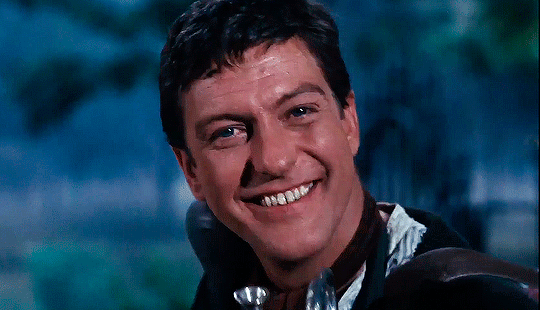
In this opening sequence, we also meet Bert, played by Dick van Dyke. The character of Bert was actually a compilation of several figures from the books, but that results in a very interesting, almost transient sort of character. This cheery, optimistic Jack of All Trades may have an accent that wouldn’t convince anyone, but is nonetheless unbelievably charming, and van Dyke’s physical comedy is so ridiculously on point. My mum and I have had a soft spot for Dick van Dyke for a long time because my late grandfather, although he was quite a bit older, resembled him quite a bit not just in appearance but also in attitude. Even now I look at Bert and fondly remember going to see the Broadway production of Mary Poppins with my grandparents, who ended up loving it and its music just as much as I did. It all the more makes me lament the end of the Soundsational Parade at Disneyland, which always concluded with a Mary-Poppins-inspired float covered in chimney sweeps and merry-go-round horses, one of which was ridden by Bert.

One of the changes that Ms. Travers was most disdainful of was the idea that the Banks family -- especially Mr. Banks -- had flaws that needed to be addressed and fixed by Mary Poppins. The flaw in the parents’ case is that they’re so focused on their own work and goals that they neglect their children’s emotional needs -- a plot point that would eventually get beaten into the ground in films that came later, but is not done half bad here. After all, the film doesn’t try to frame Mr. Banks’s job or Mrs. Banks’s activism as unimportant or bad in any way -- it’s just that the parents are solely focusing on those things. Mrs. Banks’s activism in particular, which is something that doesn’t appear either in the books or in the Broadway production, is something I really like. Sister Suffragette, which actually helped bring Glynis Johns on board to play Mrs. Banks, is just such a ridiculously fun song to sing. Although I wouldn’t ever say it’s the best song in the film by a mile, it’s still insanely catchy and entertaining, and I sing along to it every single time. WOMANKIND, ARISE!
David Tomlinson, who plays Mr. Banks, is easily the weakest link singing-wise, but fortunately he gives an acting performance that more than compensates for his poor vocals. From the very beginning, he comes across as incredibly pompous, self-centered, detached, and sexist, and yet he’s never shown to be an inherently bad person. He can be very cheerful, and even the way he’s framed makes it clear that a lot of his bluster is a front for his actual feelings, such as the way he falters when he realizes that Katie Nana has left the family. In the wrong hands, this role could’ve been despicable and shallow, but Tomlison handles it carefully enough that one can always see the emotion and suppressed softness in his eyes even long before he has his change of heart.

After an excellently paced entrance that involves effortlessly blowing away the line of nannies outside 17 Cherry Tree Lane, we are finally fully introduced to the magical lady herself, Mary Poppins. It is unbelievable when you remember that this was Julie Andrews’s first film role ever -- she’d previously only been a stage actress, but after finding success in both My Fair Lady and Camelot on stage and being denied the role of Eliza Doolittle in the film adaptation of My Fair Lady (which was later given to Audrey Hepburn), Julie accepted the role of Mary Poppins. Interestingly Julie was the only actor in the movie that P.L. Travers actually expressed some approval for, and honestly, I don’t blame her -- Julie is just flawlessly cast here. The role combines all of her performing strengths -- a great singing voice, expert dancing, inherent charm, sophistication, intelligence, pride, grace, and a touch of sass -- together in a cohesive, memorable character. Mary’s first song, A Spoonful of Sugar, really showcases Julie in her prime, spotlighting her flawless falsetto and precise pitch (as well as her impeccable whistling), and beautifully accompanies some of the at-the-time-revolutionary special effects. Although yes, it’s easy in the modern day to see how the effects were done, they’re never out-of-place or distracting, which is a testament to how much better practical effects can sometimes age in comparison to computer-generated effects. The things that tend to stick out most to my eyes are the green-screened stuff, simply because of how much that particular technique has been used in film and television since Mary Poppins’s release, but the nice thing is that it’s only one of many effects used, which helps in distracting the eye away from getting too used to one effect. Sometimes the effect will be stop-motion; sometimes the effect will be reversing the film; sometimes it’ll be green screen; sometimes it’ll be combining separate shots together. It makes it so that you would have to watch every scene several times and very carefully in order to pick out specific techniques, rather than just being able to go, “That’s fake, that’s fake, aaaaand...that’s fake,” the way you can while watching movies using only CGI.

Speaking of special effects, we have to talk about the sequence that made P.L. Travers the most upset -- the Jolly Holiday segment, set in an animated, living chalk drawing. Not only is the song just excellent, but the colors and energy of the piece are...well, practically perfect! It only serves to plus a song that was already pretty great and turns it into something amazing. Something else I like about Mary and Bert that I actually have to thank P. L. Travers herself for is that they are not romantically involved. Ms. Travers specifically indicated that that should be the case, and for a film made in the 60′s when male and female characters were almost always neatly paired off, it’s really neat that the two characters, despite some faintly teasing, flirty affects, never act like a couple. And really, having had both male and female friends since I was a kid, I really enjoyed seeing an attractive leading woman and man as friends. On the note of Mary, Bert, and songs I love singing along to, I would be very, very amiss if I didn’t also bring up Supercalifragalisticexpeliadocious. It’s really a very short number, but packed into it is so much energy that it feels like it never takes a breath. It’s like a sugar buzz, written into song form -- exuberant and big and loud and energetic...at least until the inevitable decrescendo as the rain wears away Bert’s chalk drawing and Mary, Bert, and the Banks children sadly return to the real world.
Our next adventure with Mary takes us to dear old Uncle Albert’s, where the aforementioned uncle, played by Mad-Hatter-voice-actor Ed Wynn, is rolling in the air laughing. This scene in particular showcases the various practical effects used in the film, whether hanging the actors on wires, putting them on one side of a seesaw, or even flipping the entire set on its side or upside down. Admittedly it’s very obvious that Katie Dotrice and Matthew Garber, who play Jane and Michael Banks, are having a harder time laughing convincingly than Dick van Dyke and Ed Wynn, which honestly is unsurprising given how many times they had to film this particular scene so as to get different shots. One story from the set of this film centers around Matthew Garber, after getting tired of recording the scene, receiving a nickle every time he had to go back onto the wires and in the end earning an “absolute fortune.” For child actors, Katie and Matthew aren’t awful, but it’s fortunate that they’re almost never the sole focus of a scene, as the more talented adult actors understandably overshadow them. And before you try to tell me it’s unfair to hold child actors to the same standards as adult actors, I grant that that’s true, but child actors can still give good performances that make them stand out as individuals...take Georgie Henley in The Chronicles of Narnia or Kirsten Dunst in Interview with a Vampire, for example. And as much as I’ll give Katie Dotrice and Matthew Garber credit for their performances, neither of them quite stands out that way. It’s admittedly a little harder for me to be that critical of Matthew’s performance, though, given that ten years after he retired from acting, he sadly passed away of pancreatitis at the age of 21. It’s very fortunate that thanks to his performance in Mary Poppins, Matthew will be remembered fondly for generations to come.

Walt Disney’s favorite song is frequently cited as Feed the Birds, and honestly, it’s little wonder why. As I touched on earlier, the song sort of sums up what the film Mary Poppins is trying to say -- that the smallest, seemingly insignificant gestures can mean so much. And isn’t that so integral to Disney, or even movies and entertainment in general? We all know of a character in a movie or TV show -- a line in a book -- a song someone wrote -- a simple smile from a stranger -- that somehow brightened up our whole world, that inspired us in ways we could never have imagined. And all of that comes back to sincere, gentle feelings, and how we can share those feelings with others. Mary Poppins, in short, is about compassion...and isn’t it little wonder why such a message resonated with so many people?
After an absolutely disastrous visit to the bank, the Banks children run out into the streets of London alone, where they’re fortunately found and walked home by Bert. Accompanying the jaunt back to Cherry Tree Lane is the Academy-Award-winning song Chim Chim Cheree, which is definitely catchy and, if I may say so, very fun to whistle. I admittedly am a little sour with Mrs. Banks that she doesn’t get a bit of a reality check when she ends up choosing to leave Michael and Jane alone with someone who’s effectively a stranger to her to go help her suffragette friends. It’s just fortunate that the “stranger” ends up being Bert and that Mary Poppins ends up coming back despite it being her day off, as otherwise Mrs. Banks’s negligent parenting could’ve had serious consequences. But the leap in logic does end up leading us into one of the best parts of the movie -- Step in Time!
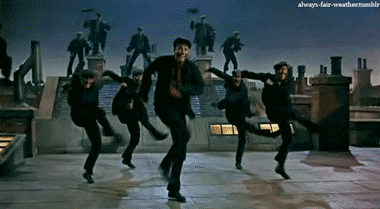
Step in time, step in time, come on, matey, step in time! Hahaha, yes, this sequence easily has some of the best dancing ever recorded on film, right up there with the choreography in West Side Story and Singin’ in the Rain. It’s especially remarkable when you know that prior to Mary Poppins, Dick van Dyke had had no formal dance training, and yet he keeps up seemingly with ease with dozens of professional dancers. It blows me away every time. And despite the unending repetition of the song, it miraculously never becomes annoying due to the variety of the dance breaks and the high level of energy with which it’s performed. And really, despite the insane length of the song (it running over eight minutes all together), it amazingly never feels like padding. Perhaps it’s because the talent on screen is just so on display and integrated so perfectly with the building orchestrations and well-chosen special effects that it only serves to plus the musical action more and more and more until it finally culminates in the chimney sweeps escaping down the Banks family’s chimney and dancing off into the street.

As fun as everything has been with Mary Poppins and the chimney sweeps, however, Mr. Banks is now in danger of losing his job at the bank, and Tomlinson’s talent is made very evident once again in how, even after seeing all of his character’s mistakes and faults, we still feel very sorry for both him and for his family. Mr. Banks at first feels the impulse to blame Mary Poppins for his change in circumstances, but thanks to some pointed guidance from Bert and some compassion from his children, he comes to see the cracks in the foundation of his world view. And this goes back to the entire family needing help -- Mr. Banks is a very, very flawed man, but at the same time, as Bert brought up to Jane and Michael, he feels he has to handle absolutely everything on his own, and it’s largely thanks to the support of his children that he’s able to face the threat of losing his job with his head held high. Something I love a lot about the part where Mr. Banks makes his way to the bank alone is the Feed the Birds instrumental that accompanies his walk and that comes to a head when Mr. Banks reaches St. Paul’s, only to see the bird woman no longer there. Whether you choose to read it as the bird woman simply having left or having died or whatever else, it’s clear that every opportunity for charity and kindness we are offered is fleeting. Compassion is and will never be a passive thing.

Fortunately everything turns out for the best. Mr. Banks makes up with his children and he, Michael, Jane, and Mrs. Banks go fly a brand new kite in the park, alongside the film’s final song Let’s Go Fly a Kite. Mr. Banks even ends up getting his job back thanks to a joke that he told Dawes, Sr. the night we sacked. Even despite the cheer, however, it doesn’t feel completely saccharine and lacking of substance to me because Mary Poppins does still leave in the end. She doesn’t achieve the same kind of happy ending that she gave the Banks family -- instead she simply takes off into the air, presumably to give some other family help, with a faintly sad smile on her face. It’s remarkably mature of an ending for something that P.L. Travers thought was “all fantasy and no magic.”
Mary Poppins is not that much like the Mary Poppins books originally written by P. L. Travers. Perhaps at some points it sanitizes or misses out on what inspired Ms. Travers to write the books in the first place...but for all that is lost, I’m confident in saying that a lot was also found. There is a lot of heart in this movie, from a family growing and improving through the intervention of a wise, magical woman to finding deeper meaning in the seemingly insignificant things in our everyday lives. This movie is ridiculously fun to watch, but it’s not like the book Alice’s Adventures in Wonderland, where there was never supposed to be a point and it was just there to entertain children. There are lessons one can learn here, and they’re not heavy-handed or pretentious in their delivery. One can learn the value of a sunny disposition, resilience, and empathy in less than stellar circumstances and see how a family full of love is the wealthiest and luckiest of all. And the best part? Those are lessons that both children and adults could stand to learn and re-learn through watching this movie for many, many years to come. Mary Poppins is an immortal figure, and even if this film was made by human hands and so couldn’t possible recreate P. L. Travers’s vision of her, the film is just as eternally relevant itself.

#d-views#disney reviews#mary poppins#disney#p.l. travers#opinion#analysis#reviews#walt disney#julie andrews#dick van dyke#pamela travers
13 notes
·
View notes
Text
A new Halloween movie is finally upon us, and it was well worth the nine-year wait, as director David Gordon Green and his co-writers Danny McBride and Jeff Fradley have delivered one of the best horror sequels ever made, in a timely story of unresolved trauma and the return of The Bogeyman.
I’ve watched Halloween 2018 three times as of this writing, and I enjoyed it more with each viewing, and so after a few weeks of thinking about it, it’s time to dive in to my full review. In this case, the following does contain quite a few spoilers, because, honestly, you’ve had almost a month to see the film. (If you’re reading this for my recommendation as to whether you should see the film, just know that I highly recommend you go see it right now. …And then come back here and read the following review).
Let’s start with the score, the most visceral link between this new film and director/composer John Carpenter’s 1978 original Halloween. Carpenter’s new score for the 2018 film not only brings updated versions of the classic themes we all know and love, but also channels all of the best parts of other classic Carpenter soundtracks. By the time Daniel Davies’ electric guitar first screams in the film, the hairs on the back of my neck stood up.
The first thing we hear over the studio logos is a dark, intensely foreboding intro. The revisited themes are all familiar but now have a new, relentlessly driving urgency, hurtling viewers toward an epic, inevitable climax.
My favorite track from the 2018 soundtrack, “Prison Montage” creates an atmosphere of complete dread for what’s about to happen, while on screen shots of Michael boarding the bus transporting the patients of Smith’s Grove Sanitarium are intercut with Laurie Strode seeing The Shape for presumably the first time in 40 years from a distance. And there’s the haunting voice of Dr. Loomis (voiced by Colin Mahan), not the voice of Donald Pleasence that we remember, but a more weary and hollow, distorted recording of the Loomis we once knew, absolutely resigned to the fact that “It has to die.”
From the opening credits to Laurie Strode’s eventual reunion with Michael Myers, the film does an amazing job of subverting our horror-ingrained Halloween-obsessed expectations while at the same time paying significant homage to the very tropes that the original Halloween created 40 years ago.
And how can fans not love all of the Easter eggs, so many loving references to the entire Halloween franchise?
P.J. Soles, who starred in Halloween ’78 as Lynda, has a classy off screen cameo as the voice of young Allyson Strode’s unseen high school teacher, and the devil costume worn by Oscar, played by Drew Scheid, is a callback to the she-devil costume memorably worn by Samantha, played by Tamara Glynn, in Halloween 5.
And Laurie Strode’s bedroom, where much of the finale takes place, is itself an exact recreation of the Doyle house bedroom where the first film ends.
We knew from the trailers that the Silver Shamrock masks from Halloween III would make an appearance, and it was indeed amazingly surreal to see, this being the first time that Season of the Witch has been acknowledged in any way since “Mrs. Blankenship” was featured in 1995’s The Curse of Michael Myers (Curse writer Daniel Farrands told me that “Mrs Blakenship” is “Minnie Blankenship” in this interview).
And of course Allyson’s asshole boyfriend Cameron Elam, played by Dylan Arnold, is the son of longtime Haddonfield asshole Lonnie Elam, who bullied poor Tommy Doyle in the first film and was last seen getting scared away from the Myers House by Dr. Loomis.
Those are just a few of the many shout-outs to past Halloween movies that are featured all throughout Halloween 2018, which only enhance the film’s re-watchability.
And speaking of doctors, let’s talk about Dr. Sartain, played by Haluk Bilginer, who we told you would be a new Loomis-like character following Nick Castle’s Q&A in February. I’d still say that Laurie is really the “new Loomis”, but Sartain serves as sort of an abbreviated, extreme version of what these new filmmakers see as likely happening to Dr. Loomis, at least to some level. Loomis was admittedly obsessed with Michael after just 15 years with him, and Sartain is certainly obsessed with him after (presumably) close to 40 years with him.
And while Sartain’s twist is definitely the biggest WTF moment of the film, even that in itself is a bit of an Easter egg too, isn’t it? Halloween is easily the crown jewel of all modern horror franchises, but it has a long history of WTF moments throughout the last four decades, some that have been eventually embraced over the years (Halloween III), and others not so much (The Man in Black), but Sartain’s WTF moment is not really that huge when compared to all of the others. And you have to admit, you did not see that coming. (We were all expecting Ben Tramer Version 2.0, right?)
On repeat viewings, you’ll notice more of how Sartain allows, almost urges, journalists Aaron and Dana to provoke his most notorious patient, and on the eve of his transfer to a new facility where the doctor does not want to think about Michael being. And there’s the odd coincidence that the transfer takes place on the night before Halloween. And you will rightly wonder just how much of what transpires next was part of Sartain’s plans all along.
This is my favorite portrayal of the Laurie Strode character ever put on screen. In a career-defining performance that more than anything honors the legacy of one of the greatest survivors in movie history, Jamie Lee Curtis has never been better. This is a heartbreaking portrait of a woman who has never fully developed into a whole person because of the horrific events that happened to her on Halloween night in 1978. And when it starts happening again, 40 years later, her worst fears, and at the same time a chance at rewriting her own narrative’s ending, are realized.
As Laurie’s granddaughter Allyson, Andi Matichak is very much the modern version of what Laurie was in 1978, instantly likable in her everyday manner, understandably questionable of both sides of her mother and grandmother’s strained relationship, looking beyond the today that her friends live in to try to find her place in a larger picture, very much on the verge of adulthood.
And The Shape? James Jude Courtney’s portrayal does exactly what he told me he did (read our interview here), channeling the space created by Nick Castle in 1978, inhabited by Dick Warlock in 1981 and all the other actors since, to tap into the essence of the simple, focused, violent existence, rather than humanity, of Michael Myers. It’s all there, from the head tilt to the walk, and when fused with Nick Castle’s recorded breathing and cameos behind the mask, it makes for a damn perfect portrayal of The Shape.
Michael has never been deadlier, creatively brutal enough to evoke memories of Rob Zombie-directed kills, and yet silently cunning, the trickster that creatively displayed the dead bodies of Laurie’s friends for her to find in 1978, who enjoys terrorizing his victims as much if not more than actually murdering them. And he’s back to being a random source of tragedy, the kind of tragedy that we see hitting random people every day on the nightly news in real life in 2018.
The subtle yet ever-present social commentary threaded throughout the film is another tribute to Carpenter, but also a testament to the decades old truth that horror always reflects the current fears of the audience.
The new mask, an aged update on the original, created by a team led by Christopher Nelson (read our interview here), Vincent Van Dyke, and Justin Mabry, is haunting, soulful, and creepy as hell.
Over the years, I’m sure the biggest criticism about this film will be that it is essentially a remake of Halloween H20 , which it is, though I’d say it is much more a third version of Halloween II, and in a franchise that has already done this disregarding of previous chapters, it’s yet another choose-your-own-adventure option to take following the first film. No matter where you place it in official canon, it’s undeniable that Halloween 2018 is one of the best sequels in the franchise, and I’d say one of the best sequels, period.
A totally entertaining tribute that honors 40 years of Halloween, Michael Myers is back, and Haddonfield has never felt more like home.
Halloween 2018 is currently in theaters.
[Read our interview with Rhian Rees on the fear and female power of Halloween 2018 here.]
[Read our interview with James Jude Courtney on playing Michael Myers in Halloween 2018 here.]
[Read our interview with Nick Castle on reprising Michael Myers in Halloween 2018 here.]
[Read our interview with Christopher Nelson on making Michael Myers’ mask for Halloween 2018 here.]
I think the new film will ignore everything after Part 1. Laurie is the new Loomis, claiming for 40 years He’s coming back. Then He does.
— Halloween Daily News (@HalloweenDaily) September 17, 2017
For more Halloween news, follow @HalloweenDaily.
'Halloween' 2018 Brings Michael Myers Back Home [Review] A new Halloween movie is finally upon us, and it was well worth the nine-year wait, as director David Gordon Green and his co-writers Danny McBride and Jeff Fradley have delivered one of the best horror sequels ever made, in a timely story of unresolved trauma and the return of The Bogeyman.
1 note
·
View note
Text
Dialect Coaches on Actors and the Best and Worst Accents
https://ift.tt/eA8V8J
Congruity is important in fiction. Trust and verisimilitude are the first casualties when breaches of the unspoken contract between creator and audience occur. Each of us has our own limits on what we’re prepared to accept before that crucial tipping point is reached and our minds unmoor from a piece of fiction. Although we understand that show-runners and directors will sometimes bend reality or sacrifice elements of the truth or historical record in the pursuit of spectacle or entertainment, some things are sacrosanct.
Arguably our ears are the fiercest arbiters of truth. These days, botched accents or dialects in entertainment vehicles are the elements most likely to trigger flash-bangs of furious incredulity, and offend cultural sensibilities (especially now that we’re past the era of casting people in serious dramatic roles out-with their own ethnicities). Though the 1995 movie Braveheart was rife with historical inaccuracies – akin to Abraham Lincoln teaming up with Grover Cleveland to fight WWII alongside Arnold Schwarzenegger – it retained a plausible and satisfying emotional core in the hearts of most Scots largely thanks to Mel Gibson putting on an eminently passable, forgivably imperfect Scottish accent. That wouldn’t have been the case had he sounded like Christopher Lambert or Pee Wee Herman.
So accents are important. They strike at the truth of who we are, where we’re from and where we’re going. It follows then that the gate-keepers of the human voice – the vocal coaches and dialect specialists that lend their expertise to the entertainment industry – perform a vital function that transcends mere entertainment. Den of Geek spoke to three of them, to get a flavor of the work they do, the professional choices they make, the role they see themselves playing, their views on the industry, and their take on the issues of the day filtered through the prism of their profession.
Nic Redman is a well-known and knowledgeable vocal coach and voice actor who hails from Northern Ireland, but now lives and works in the north of England; her coaching helps regular folks, commercial clients and famous faces alike.
Paul Meier is a voice coach, actor, professor, Shakespeare enthusiast, theatre director and archivist of dialects who made the leap from the southern UK to the mid-western US in 1978, bringing with him a wealth of expertise.
Joy Lanceta Coronel is a Kentucky-born, NY-based dialectal wunderkind, who, as well as being an eminently qualified voice and acting coach, conducts research into Asian identity and cultural representation, particularly those aspects that intersect with her profession.
Of course you can’t have three voice coaches on hand without first asking them their opinion on the worst and best examples of accents in TV and film.
Music to your ears
Let’s start with the best.
Nic singles out Jodie Comer in Killing Eve. “I’d seen her in one other thing, and she spoke in Received Pronunciation (RP) – like a standard, southern English sound – and I just assumed she spoke RP. And then I saw Killing Eve, and I was like, ‘Wow, she’s good at accents’. And then I heard her in an interview, and I’m like, ‘You are kidding me’. Because she’s a proper Scouser, like [from Liverpool, England]. And unabashedly, unashamed, wearing it proudly, as everyone with a regional accent should.”
Paul’s pick is Meryl Streep in The Iron Lady. “I’ve never seen a better impersonation. She transcended impersonation and totally got the accent, but it was a brilliant impersonation as well. I did a podcast with the dialect coach on The Iron Lady, Jill McCullough, and Jill just sat in the corner twiddling her thumbs while Meryl Streep worked her magic.”
Joy is also quick to laud Meryl Streep, particularly her performance in Sophie’s Choice. She also gives special mentions to Renee Zellweger in the first Bridget Jones’s Diary, and Daniel Day-Lewis in There Will Be Blood. When it comes to picking the worst examples of the craft, Joy favours diplomacy over dirt-slinging. “Ah this question is so nuanced because I’d hate to call people out on something that might have been the result of so many different variables. There are several instances when a coach might not have as much time with the actor for them to fully inhabit the accent. You also have to factor in that an actor might not be very familiar with an accent, and oftentimes it makes it more difficult for them to take on the sounds if it is difficult for them to hear them in the first place.”
Luckily for us and our salacious appetites, Nic and Paul have no such reservations. “I really want to give shout outs to Gerard Butler in P.S. I Love You,” says Nic. “As an Irish person I found that pretty horrific. Keanu Reeves in Dracula, Don Cheadle in Ocean’s Eleven. And, then, just a couple of shout-outs for some ladies. Anne Hathaway in One Day. I know she tried really hard. I married a Yorkshireman so I think I’m a bit more sensitive to that one. And Mischa Barton in St Trinians.”
Paul goes with something of an old classic from the accent hall of horrors: Dick Van Dyke in Mary Poppins. He follows up his choice with a salient point: “I did a podcast with my son, who is a movie critic, talking about best and worst. I found myself saying that Dick Van Dyke was so utterly charming in the role of Bert the chimney sweep, that despite his egregious cockney accent, you would say, ‘But this is how Bert speaks. This is Dick Van Dyke’s Bert’s cockney’, and it’s almost become institutional now, even though it’s a really bad cockney.”
You could say the same of Karl Urban’s accent in The Boys. Butcher is supposed to be from London, but his accent is a hotchpotch that takes in the antipodes via South Africa. Again, though, the character, and Urban’s portrayal, is such a powerhouse that you stop caring. Perhaps we make allowances for bad accents by great actors just so long as the place they’re evoking isn’t an integral part of their character’s make-up; or that the character isn’t intended as a vessel to speak for, or about, people from that place.
Do the coaches agree that many actors from the US seem to struggle with UK accents in general, and London accents in particular?
“The thing about Americans encountering British accents,” says Nic, “is they have two representations of what we sound like: Downton Abbey and anything by Guy Ritchie. English or Cockney. You’d think that would help them be specific, but I think they really struggle with it because it shares a lot with Australian as well, for very specific historical reasons, and I think they flip stuff around and get a bit confused.”
Paul believes that US actors struggle with some UK accents mainly for social reasons. “Brits and Australians are better at American accents than vice versa. And it’s not because of any innate ability. It’s just because Americans tend to be more insular. American English is the global language, very few Americans have passports, they don’t travel. It’s a big country, very self-sufficient. And so for these social, socio-linguistic reasons, Americans don’t tend to be as good at accents.”
Sometimes, says Nic, we the audience will not have been privy to the decisions made on the modelling of a character’s accent – their background, their idiolect – and thus can judge a performance unfairly. “That’s how I felt about Elizabeth Moss in Top of the Lake. She got a lot of flak for her accent, but I loved the performance so much, and she was a person from a place living in a different place, so there were going to be influences from that side, so maybe she made a conscious decision to do it that way.”
A Day in the Life
How, then, does a voice coach operate? How do they assist performers? And what’s in their toolkit? Joy clues us in:
“Sometimes I get pulled in at the last minute and I have to work with an actor who has already spent time with the script without my guidance, so those instances can be challenging,” she says. “What I do enjoy is that I get one-on-one time with the actors, so it is an intimate process. I shape my sessions based on different variables: how much time I have with them; how familiar they are with the accent or dialect, how difficult the accent or dialect is, what kind of space we are working in. It’s usually a conversation that triangulates between director, actor, and coach. If possible, I try to find an audio sample of a person who meets the criteria we discussed, and we work from those audio samples. Using a real speaker as a model is the best way to humanize the work.”
What about those rare cases where a play, movie or TV show is set in a non-English-speaking country, yet casts English-speaking actors as natives, and has them speak in English? The examples that spring to mind are the TV mini-series Chernobyl and the movie The Death of Stalin. Do voice coaches have any opinion of, or involvement with, those scenarios? Paul takes the mantle:
“If you start with the idea of a Chekhov play; all of those characters are speaking Russian to each other, and we, simply for our own convenience, are speaking a translation into English, so does it make any sense to play your Chekhov characters with a Russian accent? Not really. Because they’re not speaking a language other than their own, their first language, so why would they get it wrong? If you have a play or a film where the Russian character is speaking English, then it wouldn’t make sense not to give him a Russian accent. And then I think of exceptions, like [the movie] Chocolat. All of those characters were speaking French to each other. We, simply for our own convenience, hear them in English. And yet the director and the dialect coach very astutely gave a very slight French accent colouration to the film. And I thought it helped. It put me in that little French village.”
Authenticity and avoiding stereotypes
Authenticity clearly plays an integral role in both the coaching process and ethos. This article has so far concentrated on those dialects that predominate within the English-speaking world, but what of the importance of ensuring the authenticity of accents from other parts of the world; countries and continents whose languages and cultures may well have become an integral, though still too often marginalised, part of the shared experience of living in the US or Europe?
“I can speak from the work I’ve done in the past with accents such as Thai, Cantonese, Mandarin, Japanese and Korean,” says New York-based Joy. “These East Asian accents have a long history of stereotyping, mimicry, and caricature and it has hurt these communities. So, for that reason, it is all the more important to add as much authenticity and humanity to the accent and frame the accent through the lens of a real human being, and not just the stereotypes that were so often seen in TV, film, and stage. Studies show that most Americans don’t know a lot about Asian culture, much less the nuanced sounds of each language. It’s just not something Americans have paid attention to because of racist portrayals and phrases like ‘Ching chong chang.’ I feel a great deal of responsibility for showcasing these languages authentically, and it is my hope that audiences will begin to recognize these sounds and hear the drastic differences among East Asian languages, so that we can slowly veer away from our problematic past.”
The issue of representation within the entertainment industry, which dovetails with notions of authenticity, gained prominence during last year’s Black Lives Matters protests, and put a lot of hitherto accepted (sometimes only grudgingly) conventions under the spotlight. Animated shows like Big Mouth, Family Guy and The Simpsons were forced to reckon with the new paradigm by recasting, or un-casting, white actors who had been portraying POC. What do the coaches think about representation in this context, and where would they weigh in on versatility versus verisimilitude?
Paul, whose life and work have straddled seven decades, responds with intellectual honesty and a sprinkling of Devil’s Advocate: “I have two takes on that really. One is that it’s a shame if you take any work away from an actor. Actors, that’s what they do: they impersonate everybody, without politics, without judgement, and it seems a shame in the world of infinite imagination to deprive anybody of the ability to impersonate or play any role. To me, it depends upon the spirit in which the thing is done. Take the role of Godbole in A Passage to India, played by Sir Alec Guinness. If we made the film today, of course we would cast Indian actors, but was Alec Guinness derogating or mocking India when he played that? No, he did a sterling job, with total respect for the culture. And then, you look on the other side of it. There’s an employment theme: why would you want to – with so many great African American actors – why on earth would you want to cast a white person to do that – unless there is some sort of exceptional necessity in that casting?”
Nic is slightly more unequivocal. “Yes, every actor can potentially play whatever they want and whoever they want, but it’s not about whether they can at the moment, it’s about whether they should. And we all have a responsibility in many ways in life right now to open up the doors to some of the more under-represented ethnicities and cultures. I feel that the only way I can responsibly be a coach in the current climate is to – if anything comes along that I feel could be coached by somebody of a more appropriate ethnic background, then I’ll pass that along. And that’s a no-brainer.”
Nic still has to grapple with and practice even those accents she couldn’t in all good conscience tutor someone to speak. “It’s important for me to understand how those accents work because I may get someone of that ethnic background coming to me wanting a different accent. Everybody starts at an accent from a different place, because everyone’s accent articulation patterns are different. So, for me, I may say the ‘ow’ sound as in the word mouth. I know I have to drop my tongue, because the northern Irish accent has more of a high tongue position. If I was teaching that ‘ow’ vowel to someone who wasn’t northern Irish, I’d have to understand where their tongue position may be. I can’t say to everybody, ‘Oh, for this sound you need to lower your tongue,’ because they might not need to lower their tongue. They might need to raise, flatten or loosen their tongue. So it’s not one-size fits all. It’s part of my job to look into these histories and cultures, and understand how these sounds work and feel.”
Joy picks up the question of representation as it relates to The Simpsons and other animated shows, and examines it all through a wide cultural lens. “I appreciate the movement to re-cast these roles. There is no justification for characters like Apu and Doctor Hibbert being voiced by white actors, and it’s something I’ve opposed for a long time. It simply perpetuates stereotypes and caricatures. And there’s no justification because there are a multitude of actors who could have voiced these characters, and who could have embodied the racial, linguistic, and ethnic background of these characters. BIPOC actors already have limited opportunities as a result of limited stories on BIPOC, so why deprive them of the opportunity? In addition to perpetuating colonialism mentality, white characters voicing Indian, American and Black characters completely ignores the history of Blackface, Brownface, and minstrel performances, all of which were racist practices meant to mimic and inaccurately portray these communities through humor.”
In closing: with whom were the trio most proud of working; who was the actor or person who shone the brightest under or alongside them? Paul plumps for Tobey Maguire, Joy for BD Wong, actors they lavish with praise. Nic takes a different approach, declining to name anyone specific. “I’m most proud of the clients who come and commit to the work – and they come back as much as they need, as they can afford, as they want, and they make genuine improvement, and it has a genuine impact on their life and their career. That’s the amazing kind of thing about this job. With the right attitude, and enough time and money I think anybody can learn an accent… but that’s a Holy Trinity that doesn’t always come together.”
cnx.cmd.push(function() { cnx({ playerId: "106e33c0-3911-473c-b599-b1426db57530", }).render("0270c398a82f44f49c23c16122516796"); });
Please tell us your picks for the best and worst accents in film and TV in the comments below. Also, there are links to our interviewees should you wish to enlist their services, or are curious about their work.
Paul Meier – Dialect Services www.paulmeier.com
Nic Redman – Voice Coach and Accent Specialist Nicredmanvoice.com
Joy Lanceta Coronel – Speech, Dialect and Communication Coach joylanceta.com
The post Dialect Coaches on Actors and the Best and Worst Accents appeared first on Den of Geek.
from Den of Geek https://ift.tt/2OoSTE1
0 notes
Text
Carl Reiner (1922 - 2020)
Betty and Dick Dixon would put their three sons to bed by nine o’clock at night in 1962, then settle in for a little TV viewing before turning in themselves.
Betty would fold laundry or do some sewing sitting on the couch while Dick, not much of a TV viewer unless it was sports or news, would read the paper for ten to fifteen minutes before dozing off in his big green overstuffed armchair.
Rikk and Robert Dixon may very well have been asleep along with their dad come nine-thirty, but on Wednesday nights little Buzzy boy lay awake and alert in bed, listening to the faint TV sounds in the living room, waiting for a familiar theme to start playing.
When it did, he carefully crept out of bed, down the hall, and into the living room, crouching behind his father’s chair while Dick Dixon snoozed away, peering over the top like Kilroy in the old WWII graffiti.
He was there to watch The Dick Van Dyke Show, and today, sadly, he’s here to commemorate the incredible genius behind it and to acknowledge a debt that can never be replayed.
I’ve posted elsewhere about how I gravitated to the art of story telling at an early age, already analyzing and dissected the way stories were told even before I knew what I was doing. The Dick Van Dyke Show was tailor made for me, even at the age of eight.
Seriously, what’s not to love?
It was a series about a lucky guy with a happy home and a wonderful wife and the greatest job in the world: Hanging out all day with two great and funny friends, doing nothing but coming up with ideas and skits and stories, all of which end up being broadcast on a popular TV show.
For 90% of the writers of my generation, The Dick Van Dyke Show proved to be the single greatest career inspiration.
And we can all thank Carl Reiner for that.
. . .
Go ahead and Google him; you’ll find more info that I can pack into this wholly inadequate obituary.
The man was a creative genius with no misplaced ego. Whatever worked, as long as it made the final project better.
Reiner was hilarious in person, but he also knew when to let someone else shine. He and Mel Brooks performed a long running free-form improvisational routine called “The 2,000 Year Old Man” in which Reiner would play a reporter interviewing Brooks, the aforementioned 2,000 year old man.
The secret to a good comedy team is the straight man. It’s the straight man’s job to guide the performance of the comic, to steer them away from failing ideas and back towards laugh getters. When comedy teams split up it’s typically because either the straight man wants to be recognized as equally funny, or (more commonly) because the comic thinks they can do it on their own.
Reiner and Brooks revived the 2,000 Year Old man again and again and again, never running out of material. Never once did Reiner try to one-up Brooks -- and never once did Brooks think he could do the routine all on his lonesome.
It takes supreme self-confidence to step back and let somebody else get the spotlight, but Reiner could do that.
The Dick Van Dyke Show wasn’t supposed to be a show about Dick Van Dyke.
It started life as a pilot called The Head Of The Family and other than living in a New York brownstone instead of a ranch house in New Rochelle, it was pretty much the same show that became one of television’s all time classic sit-coms.
Only it starred Carl Reiner.
For reasons best known to CBS, the suits decided they wanted Van Dyke, then an up and coming stage actor, to carry a show based on Reiner’s personal life experiences.
Reiner graciously ceded the point and stepped back.
Would The Head Of The Family have been the big hit The Dick Van Dyke Show was?
Maybe; maybe not.
Casting chemistry has a lot to do with the success of any production.
But it sure would have been just as funny.
. . .
Another aspect of Reiner’s comedy sensibilities is that his work never felt meanspirited.
Ph, he could skewer inflated egos with the best of ‘em, but he never belittled or demeaned his characters.
The Comic is a sadly underrated drama he made with Dick Van Dyke about a has-been silent movie comedian. We find ourselves laughing at first, but by the end of the picture we come to realize it’s not a comedy but rather a tragedy with some grimly comic bits.
Where’s Poppa? is another underrated film, against bypassed by most audiences as a morbidly comic film, but again, it’s not.
Rather, it’s a sad yet humorous story about an adult child desperately trying to cope with a parent sliding deeper and deeper into dementia with each passing day.
Reiner’s writing always showed he wanted good things to happen to his characters -- all his characters.
He wanted them to learn, he wanted them to rise above themselves, he wanted them to be better people than they thought they were.
And the humor came in their failings, true, but the failings were never the climax of the story, just act two.
And while Reiner could be passionate in striving for things he believed right, and strenuous in his opposition to those whom he felt inflicted harm, at every step of the way one could sense he hoped the other side would have a flash of insight, a moment of awakening when they’d recognize what they were doing and turn away from it.
Carl Reiner knew the difference between justice and retribution.
. . .
I met Carl Reiner briefly once at Howie Morris’ funeral (see what he and Carl and Sid Caesar could do together here). I exchanged a few Tweets with him; he was kind enough to respond to a few comments I posted.
I did get to tell him how much The Dick Van Dyke Show influenced me, not just professionally but personally, and while I think he heard that a lot from many, many other writers, I think he appreciated it every time.
No bask, not preen, not strut in pride, but appreciate that something he did made such an impact on literally thousands of other people that it changed their lives.
No, we didn’t all go on to be big time TV writers -- let’s be brutally honest, I’m a piddlin’ size fish in the tiny pond of TV animation -- but it gave us something to aim for, something to aspire to.
Even those who never made it in show biz gained something from that show, and I’ve never heard anyone regret any decision they made based on it.
So again, thank you, Carl.
You made a huge impact.
The world is not just a different place because you were in it, it’s a better place.
© Buzz Dixon
3 notes
·
View notes
Text
DORIS SINGLETON
September 29, 1919

Dorthea ‘Doris’ Singleton was born in New York City in 1919. She trained as a ballerina but began her career in show business as a vocalist in the late 1930s. Singleton worked as a guest star and in regular roles on numerous hit radio shows.

During a guest appearance on the radio show “My Favorite Husband” in 1948 she met Lucille Ball and this began their long professional relationship.

When she first appeared (in a sweater coveted by Lucy) in “The Club Election” (ILL S2;E19) in 1953, her character was named Lillian Appleby but it was decided that she should go by Caroline Appleby in all future episodes. In “Lucy Gets Into Pictures” (ILL S4;E18), Desi Arnaz made an error and called Caroline Appleby “Lillian” but the error remained in the final print.

Caroline and Marion Strong (Shirley Mitchell) turn up for the club meeting when “Lucy and Ethel Buy the Same Dress” (ILL S3;E3).
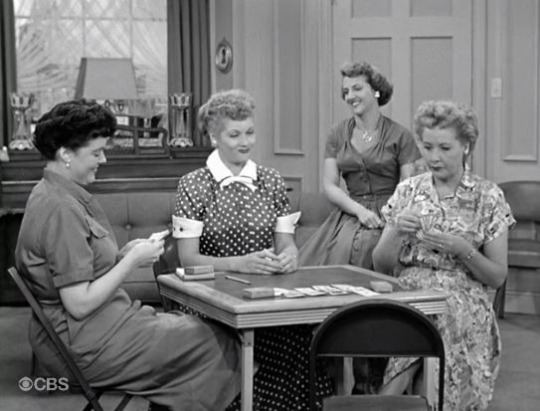
A game of cards in “Lucy Is Matchmaker” (ILL S2;E27) brings out Caroline and Pauline (Peggy Rea).

In “The Camping Trip” (ILL S2;E29), the card game has swapped out Pauline for Sally (June Whitely Taylor).
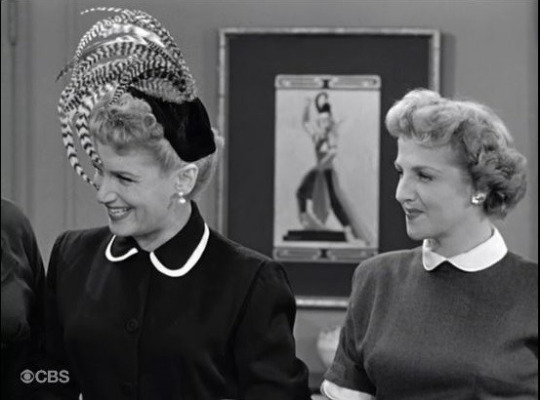
The card game is moved to the Appleby apartment (Chinese Modern) in “Lucy Tells The Truth” (ILL S3;E6), with ‘cackling’ Marion Strong wearing a statement hat!
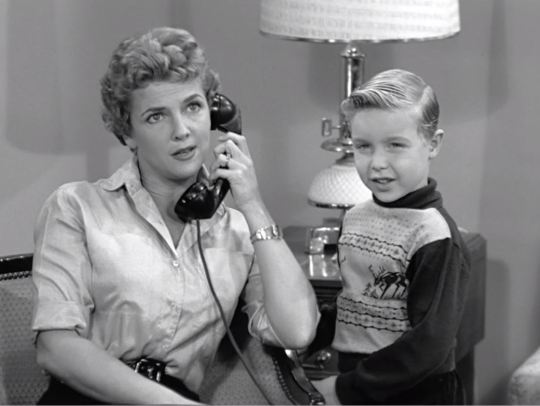
Caroline Appleby with her son Stevie (Steven Kaye), one of Little Ricky’s best friends.

Caroline with her husband, local TV station manager Charlie Appleby (Hy Averback) in “Baby Pictures” (ILL S3;E5) . The next (and last) time we see Charlie Appleby he will be played by George O'Hanlon (inset photo).
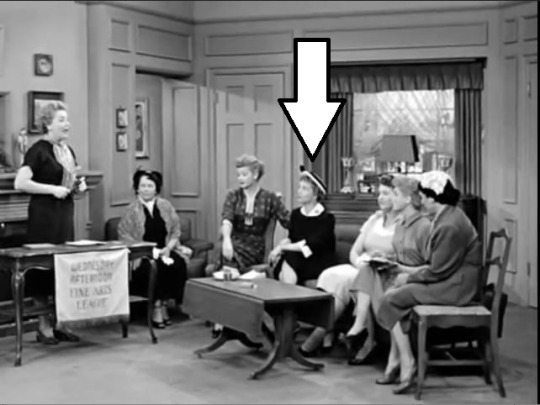
The Wednesday Afternoon Fine Arts League calls an emergency meeting to address the deficit in the budget in “Lucy’s Club Dance” (S3;E25). Caroline Appleby turns up in a black dress with Peter Pan collar and hat!

Visiting Hollywood, Caroline was suddenly near-sighted! To convince Caroline that she was hob-nobbing with celebrities, Lucy and Ethel scheme to get her glasses off her in two related episodes, “The Dancing Star” (ILL S4;E27) and , “Lucy Meets Harpo Marx” (ILL S4;E28).
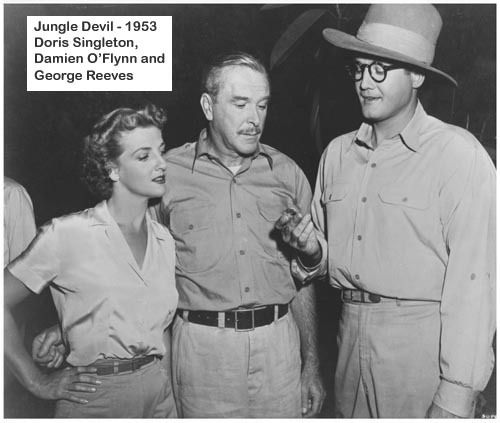
In 1953, Singleton made her television TV debut as Gloria Harper in the episode "Jungle Devil" on “The Adventures of Superman.” Coincidentally, Singleton's final appearance on “I Love Lucy” was in an episode with Superman (George Reeves), "Lucy and Superman" (ILL S6;E4).

In 1966, Singleton was teamed again with Ball on “The Lucy Show” in the episode, "Lucy and Art Linkletter", in which she plays Ruth Cosgrove, an actress whom Linkletter hires to help Lucy with a stunt on his television series. Coincidentally, Ruth Cosgrove is the name of Milton Berle’s real-life wife, who will also guest star on “The Lucy Show” as herself.
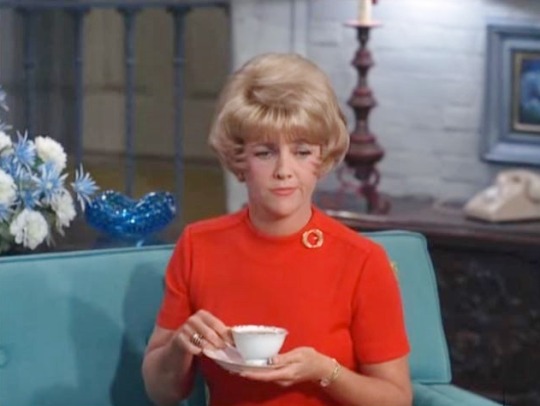
Her second appearance on “The Lucy Show” was in “Lucy Gets Her Diploma” (TLS S6;E5) in 1967. Note: Doris has very little to do with the main plot of this episode. Her one scene might have been originally meant for Mary Jane Croft but reassigned due to a conflict in Croft’s schedule or illness.
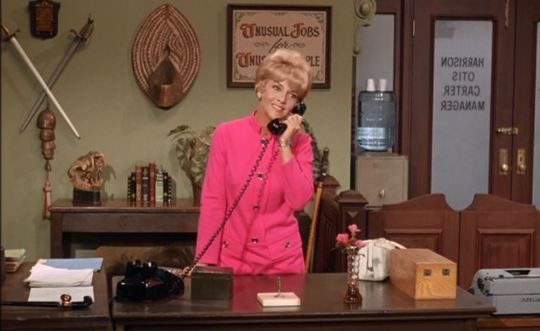
Singleton said that she had originally been hired to be a regular on Ball's third series, “Here's Lucy” in 1968. Ball would have played a dumb secretary and Singleton the more intelligent one, but the premise was dropped when Ball decided to cast her own children in the show. She did, however, appear in the series premiere episode, "Mod, Mod Lucy" (HL S1;E1).

In 1971, Singleton was featured on an episode of ABC sitcom, “Make Room For Granddaddy” which had Lucille Ball as the guest star. In this installment, titled "Lucy Carter, Houseguest", Singleton played Grace Munson, another character from “I Love Lucy,” although she is listed in the credits as Sylvia.

In a 1973 Bob Hope Christmas Special, Lucille Ball, Gary Morton, Hope and Doris Singleton all played themselves in a sketch that finds Lucy believing Bob has a secret crush on her and buying her expensive gifts. Singleton is not given a character name but drops by to Ball’s home.
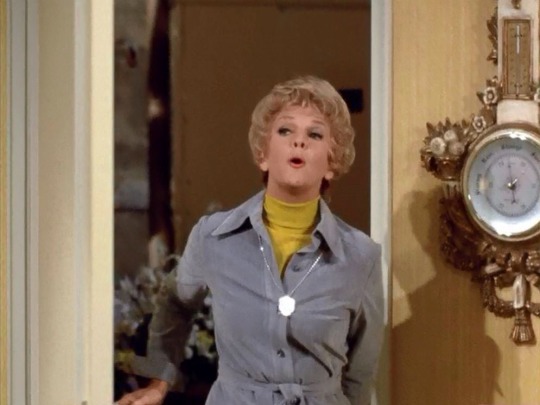
Her final appearance on “Here's Lucy” was as Lucille Ball's studio secretary in "Lucy Carter Meets Lucille Ball" (HL S6;E22) in 1974. Her character was named Doris. (If Lucy was Lucy and Lucille was Lucille, then why shouldn’t Doris be Doris?)

Singleton and Ball were reunited one last time, again as Ball's studio secretary, in the 1980 special “Lucy Moves to NBC.” She played Wanda Clark, who was Lucille Ball’s real-life secretary.
DORIS at DESILU (SANS LUCY)

Singleton did an episode of Desilu’s helicopter series “Whirlybirds” in 1957. She played Jan Revere in an episode titled “Lady Luck.”

In 1954 and 1958 she was at Desilu for two episodes of “The Danny Thomas Show”. In 1958, to symbolize the show’s move to CBS, the Williams family moved into the Ricardo home in Westport. In return, Lucy and Desi guest-starred on “The Danny Thomas Show” as the Ricardos.
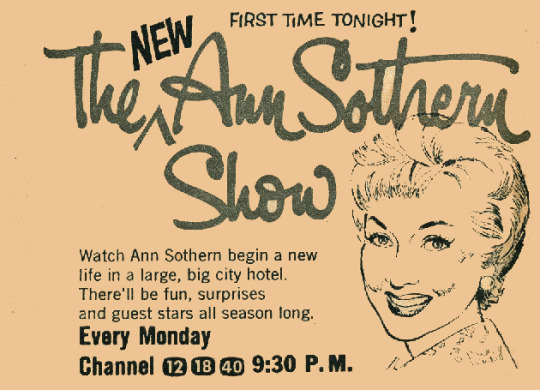
In February 1960, Doris played Mavis on Desilu’s “The Ann Sothern Show” directed by “Lucy’s” James V. Kern. In a 1959 cross-over episode of “The Ann Sothern Show”, Lucille Ball guest starred as Lucy Ricardo.

In 1960, Singleton became a regular character of Desilu’s new series “Angel” about a young woman who has moved to America from France after getting married to her sweetheart, John. Singleton played Susie for 26 of the show’s 33 episodes. It last just one season. Above, Lucille Ball attends a kick-off event featuring Jess Oppenheimer (creator), Annie Fargue (Angel) and Marshall Thopmson (Johnny). Singeton shared the soundstage with “Lucy” alumni Shirley Mitchell, Gale Gordon, Madge Blake, and many others.

In 1960 and 1962 she was back at Desilu for two episodes of “The Real McCoys”.

Singleton was in three episodes of “The Dick Van Dyke Show” between 1962 and 1965.

In Fall 1967, Singleton did a day on “Gomer Pyle: USMC” filmed at Desilu Studios. A year earlier, Gomer Pyle (Jim Nabors) made a cameo appearances on “The Lucy Show” (TLS S5;E9) in which Lucy Carmichael is mistaken for Lou C. Carmichael and drafted!

“My Three Sons” - on which she played two different characters - was filmed on the Desilu backlot. Her first character was Helen Morrison (two episodes in 1964 and 1965), the mother of Sally Ann (Meredith MacRae)—the woman who married the eldest of the Douglas sons, Mike (Tim Considine), and both left the series shortly after the start of the 1965-66 season. Doris was pressed into service again in the 1970-71 season to play the mother (Margaret) of Polly Williams (Ronnie Troup), a girl who also nabbed herself a Douglas boy—this time eloping with youngest son Chip (Stanley Livingston). She played the character for six episodes.
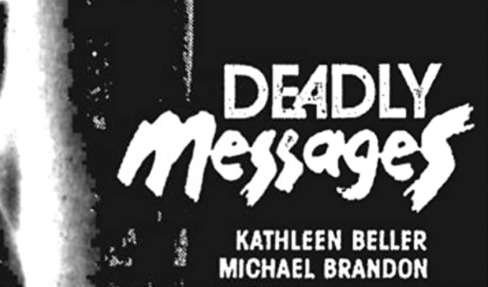
Her final screen appearances was a small role in the ABC TV film Deadly Messages in 1985.
Singleton married Charles Isaacs in 1941, and they remained married until he died on December 13, 2002. She died in 2012, aged 92, from complications of cancer. She had no children and left no immediate survivors.
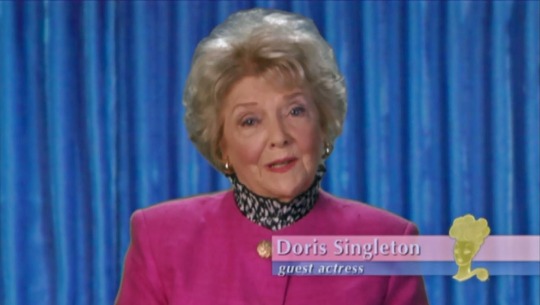
#Doris Singleton#I Love Lucy#The Lucy Show#My Favorite Husband#Caroline Appleby#Here's Lucy#Lucy#TV#My Three Sons#Dick Van Dyke Show#Whirlybirds#Deadly Messages#Lucy Moves to NBC#Bob Hope#Gomer Pyle USMC#The Real McCoys#The Danny Thomas Show#Superman
6 notes
·
View notes
Text
Iconic things about The Dick Van Dyke Show
-For the time The Dick Van Dyke Show was incredibly diverse. You got to remember this was the early 1960s, back in the day you were lucky to see African Americans in any capacity and when they were in shows or movies they were strictly in the service industry. That started to change in the late 50s to early 60s and TDVDS was kinda the start of that in Television. People of color were depicted in different capacities than usual. In the episode “That’s My Boy??” the actors Greg Morris and Mimi Dillard played a normal upper middle class family. In this episode Rob thinks that Laura and himself were sent home with the wrong baby from the hospital and he believes that their baby was taken by a family with the last name Peters. The Peters ended up being African American and they were depicted as well dressed and well spoken people who seemed to live in a similar area and walk of life as the Petries and in that episode the black couple is funny and completely sane whereas the white man (Rob) is depicted as the butt of the joke. Also at the end of the episode Rob subtly mentions how their son Richie is getting horrible grades and the Peters’ son is at the top of the class. It’s small things like that, that had never been seen on Television. In a episode named “The Man from My Uncle“ an actor by the name of Godfrey Campbell played an FBI agent. And that’s not counting the numerous POC in smaller roles or as extras in scenes. This was a time where you were lucky to see POC even as extras.
-The feminism in TDVDS took amazing strides as well. There were times where Rob is shown to be very insecure, and I think that’s some of the most of it’s time aspects of the show. It’s not great, but it’s realistic. One of my favorite character choices for Laura Petrie is that we find out that she is proficient in self defense.... she learned self defense techniques when she was an entertainer for the troops. In the episode “My Mother Can Beat Up My Father,” a drunk at a bar harasses Laura and Rob tries to defend her and he gets laid out by the drunk. Laura then does a judo throw on the guy and lays him out. It becomes a big thing for Rob in that episode and he’s very insecure about the fact that Laura can take a guy that Rob can’t. But Laura does not apologize for that fact, and in one scene Rob is trying to prove that he’s all tough and so he challenges Laura to do the same throw with him. Laura doesn’t pretend she can’t do it to spare his fragile masculinity, she lays him out and if I remember correctly he broke a few bones. Also the character of Sally Rogers has been touted as one of the first women’s lib characters. She’s a Television writer alongside Rob and Buddy and she is treated with respect and is presumably paid the same as Buddy who is a writer on her same level. She is a proud career woman who is damn good at her job, and is an equal to the men in her workplace. Another big way that TDVDS broke ground was the fact that Laura wears capri pants. Believe it or not that caused a firestorm of controversy.... up to that point housewives had been shown as wearing dresses and skirts on TV and once the dust settled the fact that Mary Tyler Moore wore capri pants on TDVDS caused those pants to become a huge fashion craze in the 60s.
-TDVDS became a huge hit starting with the second season against all odds. First off Carl Reiner had created the show a couple years prior and had actually shot a pilot with an entirely different cast and with himself in the lead, at that time it was called “Head Of The Family.” It aired and did not get picked up. Carl just gave up on it and it lay on a shelf collecting dust. A couple years later someone with the William Morris Agency tried to get Carl to retry it and he refused. That agent then went to the most successful producer at that time, Sheldon Leonard. Sheldon was known for having a perfect record for his pilots, absolutely all of them had been picked up to series, some of which were huge hit shows. Sheldon saw the show and immediately saw the potential. He approached Carl about the idea of retrying with an entirely different cast and name.... once a famous producer says they have faith in your show, how can you say no. So they set to the task of finding a cast. Dick Van Dyke was one of the first people to be cast in the show, and at that point Dick was in the middle of a successful run on Broadway in the show “Bye Bye Birdie” which he’d won a Tony Award for, but being successful on Broadway doesn’t usually translate to fame with the general public (up until Lin Manuel Miranda that was true). So not only did they cast an unknown in the lead role but they then turned around and named the show on the said unknown actor. That was an extremely ballsy and risky move. At the time there were a lot of shows named after actors but they were all famous stars like Doris Day etc. To name a show after an unknown actor was unheard of!! They then cast Mary Tyler Moore (who was an unknown), they cast Rose Marie (who was never hugely famous, but had a really good career on radio and in night clubs. But even if you consider her to have been famous, she was kind of a has been), Morey Amsterdam was cast (an unknown), Jerry Paris and Ann Morgan Guilbert were cast (also unknowns). It was really a cast full of unknowns in the leads. There were no big names. Which was really a disadvantage going in. The first season bombed, it was near the end of the Nielsen ratings and morale was severely low at the end of the season. Sheldon Leonard actually got word from a friend who was on the committee that decided which shows were cancelled and which her renewed, that the show had indeed been cancelled and it just hadn’t been announced yet. So Sheldon went into problem solving mode. He knew that going to the network wouldn’t get him anywhere. At that time sponsors were king and TDVDS had one of the biggest sponsors in the game, Proctor And Gamble. So Sheldon flew to Proctor And Gamble’s headquarters and in his own words he “sang mammy” in other words he begged and he charmed their pants off (figuratively) :) At the end of his pitch, they agreed to go to bat for the show... on one condition.... that he found a sponsor to sponsor the second half of the season. So he raced from sponsor to sponsor pitching his show and begging them to co sponsor them. He was in the middle of a pitch when he was alerted that Kent Cigarettes had decided to sponsor their second half. Proctor And Gamble and Kent Cigarettes went up against CBS and demanded that they renew TDVDS or else they would withdraw support from all their other popular shows. And CBS caved and renewed the show. With S2, TDVDS became a massive success and by the end of S5 the network was begging Carl Reiner to make another season but Carl wanted to end the show while they were still on top. TDVDS also became the darling of the awards shows. They continually swept the Emmys every year starting with S2. They won for writing, directing, and acting, it also won Best Comedy in 1966 with it’s final season.
-The scripts were largely based off of real life. Nowadays it’s more common for shows to take ideas from real life, but at the time Carl Reiner’s wish for authenticity was largely unheard of. Writers on the show described the writing sessions as therapy sessions because it would start with Carl probing into their life and them talking about embarrassing things that happened to them. Carl and the writers would take those ideas and make them bigger and crazier but there was always that nugget of truth in there.
-The marriage between Rob and Laura was also iconic. You gotta figure that I Love Lucy was a huge show of the past decade and it really shaped most future shows. In some ways TDVDS was the antithesis of that. Carl wanted to create a show where the main married couple was united... it was them against the world. He shied away from battle of the sexes storylines whenever possible. He wanted Rob and Laura to be clearly in love. And it’s a unique relationship where you can tell that those two have an active sex life... and that was really unique for the time.
-Carl Reiner made a decision at the beginning of the show that he would never use popular slang terms of the 60s. In fact if you watch beginning to end, only one slang term slipped in, in S5. Otherwise, he remarkably kept to that. Because of that crucial decision, TDVDS is not as dated as it could be and it has a very timeless feel to it.
-The cast was known to get along famously, there were only a few moments of tension, otherwise the set was known to be very light and there was little tension. They were all pranksters and the set was alive with hilarity, laughter, and pranks. They used to haze guest stars... most of the guest stars were fine with being hazed but there was one who did not take it so well. During the filming of one episode Robert Vaughn was the guest star and he was on the outskirts of the set waiting for his cue to come in. The actors led the entire cast and crew off the set and turned off the lights and left Robert waiting for his cue for about an hour, until he walked in to see what the holdup was only to find the entire cast and crew gone. It’s hilarious, but he wasn’t too happy. The cast was like a huge family, but most guest stars described them as being very welcoming as well.
Edit. Another iconic thing I almost forgot is the fact that certain episodes are used in film classes as examples of how to write comedy. It’s so funny and iconic that it is the textbook case of how to write comedy shows!!!! When will your favorite show ever... ;)
#the dick van dyke show#long post#iconic#diversity#feminism#emmys#tdvds#robert petrie#rob petrie#carl reiner#sheldon leonard#laura petrie#buddy sorrell#sally rogers#dick van dyke#mary tyler moore#morey amsterdam#rose marie#jerry paris#ann morgan guilbert#robert vaughn#the golden age of hollywood#the golden age of tv#greg morris#mimi dillard#godfrey campbell
79 notes
·
View notes
Text
Press: Marvel’s Latest Frontier? In ‘WandaVision,’ It’s the Suburbs
Marvel’s first series for Disney+ is part drama, part homage to vintage sitcoms, following the misfit heroes played by Elizabeth Olsen and Paul Bettany to some weird places.
NY TIMES: In the time they have spent playing Marvel heroes together, Elizabeth Olsen and Paul Bettany have gotten extremely comfortable with each other. Not even a little misdirected mucus during the making of their new Disney+ series, “WandaVision” — an incident they affectionately describe as “Snotgate” — flustered them for long.
It occurred when their characters — a woman enhanced with psychic powers named Wanda Maximoff (Olsen) and a synthetic android called Vision (Bettany) — shared a kiss in, especially cold weather. And some disagreements remain about the specifics of how it transpired.
“Paul was not in a good mood for me to make a joke about his snot,” Olsen said in a video interview with Bettany last month. “It was my first time ever seeing him get truly defensive about anything.”
Here, Bettany leaned into his camera and replied, sotto voce: “It was her snot. Anyway.”
They agreed that their differences were quickly settled, and now they can laugh about it. “It was over as quickly as it happened,” Bettany said.
Such are the perils of playing a troubled woman and a sophisticated robot who have fallen in love with each other — characters who first met in the 2015 Marvel blockbuster “Avengers: Age of Ultron,” returned for several sequels and now get the chance to carry their own television series when “WandaVision” makes its debut on Jan. 15.
Like its main characters, “WandaVision” is, well, weird. It’s not strictly an action-packed spectacle in the manner of hit movies like “Avengers: Endgame” — it’s a hybrid of drama and comedy that pays faithful homage to vintage sitcoms like “The Dick Van Dyke Show,” “Bewitched” and “Family Ties.”
Now, through circumstances beyond anyone’s control, “WandaVision” has to carry even more weight. When the pandemic prompted Marvel to reshuffle its release calendar, “WandaVision” became the studio’s first attempt to bring the superhero soap opera of the Marvel Cinematic Universe to an original Disney+ series, in hopes that it will do for its comic-book characters what “The Mandalorian” has done for “Star Wars,” another Disney-owned fantasy franchise.
These are unexpectedly high stakes but, like the love-struck misfits they play, the stars of “WandaVision” see them as reasons to be more understanding of each other, snot and all.
As Olsen explained: “It’s daunting to take these movie-theater characters and put them on a small screen. There’s a lot of firsts that are a little scary as an actor.”
Bettany agreed. “We need to feel safe with each other,” he added, “to do the thing we’re doing.”
Both actors entered the Marvel family in unusual ways. Bettany, a star of films like “A Beautiful Mind” and “Margin Call,” was cast in the first M.C.U. movie, “Iron Man,” to play the voice of Tony Stark’s artificial intelligence system, J.A.R.V.I.S.
“I would turn up for one day’s work and solve everyone’s problems,” Bettany said. “I could go, ‘The bad guys are coming, sir!’ And then they would give me a bag of money, and I would go home. It was lovely.”
Bettany was upgraded to an onscreen role for “Age of Ultron,” which also introduced Olsen (“Martha Marcy May Marlene”) as Wanda. At that time, Olsen said: “I was getting typecast as emotionally struggling young women in small genre films. They were like, let’s put her in a bigger genre film and make her the mentally unhealthy struggling hero.”
Though the spotlight shone brighter on co-stars like Chris Evans and Robert Downey Jr., Bettany and Olsen bonded over the strangeness of their enterprise, like a behind-the-scenes debate they observed over whether Vision should have android genitalia. (Mercifully, the answer was no.)
As they went onto films like “Captain America: Civil War,” they found that they shared an appreciation for diligence and preparedness, even on a hectic Marvel set.
At one point on that film, Olsen said, “I asked Paul if he wanted to run lines with me for the next week. And he had his lines memorized for next week. I was like, this is going to be a great working relationship.”
But Vision was seemingly killed in “Avengers: Infinity War,” and the following year, “Endgame” concluded the narrative arcs of major heroes like Iron Man and Captain America.
Marvel was exploring storylines for its next wave of movies when Disney introduced its Disney+ streaming service, with the expectation that Marvel would also provide original content for it.
Kevin Feige, the Marvel Studios president, said that a Disney+ series offered the opportunity to flesh out the relationship between Wanda and Vision that had been only hinted at in the movies.
“The entirety of the love story between Wanda and Vision was basically one shot in ‘Age of Ultron’ where he swoops in to rescue her, they make eye contact and fly away,” Feige said. “Then a bit more in ‘Civil War,’ a bit more in ‘Infinity War,’ but it all goes bad very quickly in that movie.”
In several decades of comics, Vision and Wanda shared a romance that was much more intricate: They dated, married, had two sons, broke up and reconciled. (Also — and here is where it gets messy — Wanda discovered that her sons were actually the missing pieces of a demonic villain, who reabsorbed them; then she lost and regained the memory of her vanished children; and then she vengefully unleashed her powers to rewrite reality itself.)
With “WandaVision,” Feige said that he had wanted to honor the complexity of the title characters and Wanda’s reality-warping abilities but also to leaven the story with tributes to sitcom history.
“I feel like I’ve justified all the time I spent playing with action figures in my backyard,” he said. “All the time I spent watching Nick at Nite and old TV shows, I haven’t justified yet. This show is helping me do that.”
The series finds Wanda and Vision — now somehow alive — residing in suburban bliss, not entirely sure of why they are cycling through various eras of television history and encountering veteran Marvel performers like Kat Dennings (as her “Thor” character, Darcy Lewis) and Randall Park (reprising his “Ant-Man and the Wasp” role of Jimmy Woo) as well as new additions to the roster, like Teyonah Parris (as Monica Rambeau) and Kathryn Hahn (playing a perplexingly nosy neighbor named Agnes).
As with many of the Marvel movies, there is also a central mystery running through “WandaVision,” asking viewers to ponder the ever-changing reality that envelops its romantic leads.
Jac Schaeffer, the head writer of the series, said that the show’s comic exterior was intended to lure its audience into its further layers of intrigue.
“You enter a sitcom episode with the understanding it’s going to make you feel good and it’s all going to be OK at the end,” said Schaeffer, who also worked on “Captain Marvel” and “Black Widow.”
What “WandaVision” adds to this formula, she said, is an element of “creepiness — the idea of shattering that safety in a calculated way.”
Matt Shakman, who directed all nine episodes of “WandaVision,” said that the series ultimately tells a story of “grief and trauma and how we hold onto our hope.”
“Wanda is probably the person who has suffered the most of anyone in the M.C.U.,” he added. “And so the show is always grounded in that. Even though what you see are faithfully recreated television shows, there’s a lot more going on than meets the eye.”
Shakman has previously directed shows like “Game of Thrones,” “Succession” and “It’s Always Sunny in Philadelphia” and was himself a former child actor on TV sitcoms like “Diff’rent Strokes” and “Just the Ten of Us.” Directing “WandaVision,” he said, was “a gloriously schizophrenic job” that some days required orchestrating action sequences on green-screen sets, and some days involved shooting on the same sitcom stages where he once worked.
For these TV tribute sequences, Shakman and his team worked carefully to reproduce the wardrobe and production design of shows like “I Dream of Jeannie” and “The Partridge Family,” using vintage lighting and camera lenses and filming in front of live studio audiences.
Although the “WandaVision” actors were given two weeks of sitcom boot camp before filming started, they did not require much training to get into the spirit of things.
Olsen is, of course, the younger sister of the former “Full House” stars Mary-Kate and Ashley Olsen; she appeared in some of their later projects and grew up a fan of shows like “Laverne & Shirley” and movies like “A Very Brady Sequel.”
Bettany said that classic American shows were a regular part of his TV diet when he was growing up in England. He speculated that some of the religious exploration his family undertook in his childhood may have happened “because my mom was watching ‘Little House on the Prairie’ — we were in for a penny, in for a pound.”
Had events unfolded according to Marvel’s earlier plans, the debut of “WandaVision” would have followed the theatrical releases of movies like “Black Widow,” “Eternals” and “Shang-Chi and the Legend of the Ten Rings,” as well as the premiere of “The Falcon and the Winter Soldier,” an action-oriented Disney+ series in a more familiar, “Avengers”-like mode.
The pandemic required Marvel to reorganize this rollout, but Feige said that the studio’s carefully planned master narrative, stretched across its films and TV shows, had not been significantly affected.
“If the run we had in 2018 and 2019 had gotten disrupted this way, in the buildup to ‘Endgame,’ it would have been a bigger headache,” he said. “With these projects, it worked well,” he went on, adding that the debut dates for the TV shows were shifted only “by a matter of weeks.”
The creation of “WandaVision” was also affected by the pandemic; its actors left an environment where they could freely mingle with co-workers and returned to one, several months later, where “you finish your scene and you get whisked away into these hermetically sealed bubbles,” Bettany said.
“I had a hard time with that,” Olsen said, her voice hardening in exaggerated anger. “I was like: ‘But I’m talking to the crew! This is for moral support!’”
In that sense, the actors said, perhaps it was fitting that “WandaVision” should reach audiences at this moment, when both its narrative message and its making-of process reflect a human desire to keep going, no matter how unrecognizable the world becomes.
“We’re all experiencing this extreme version of life right now,” Olsen said. But for a time, while she and her colleagues finished their work on the series, “We created this microcosm of humanity where we could communicate and problem-solve together,” she added. “There was something great about getting to come to work and experience that.”
What Marvel has done consistently, for its characters, its cast members and its audience, is “create a home for people who wouldn’t necessarily find each other,” Bettany said.
In the particular case of “WandaVision,” he added, “It’s about a group of people finding each other — people who are really getting their freak on — in a situation where it’s all right to be really different.”
Press: Marvel’s Latest Frontier? In ‘WandaVision,’ It’s the Suburbs was originally published on Elizabeth Olsen Source • Your source for everything Elizabeth Olsen
#Elizabeth Olsen#Avengers#Scarlet Witch#Avengers Infinity War#Avengers Age of Ultron#Captain America Civil War#Kodachrome#Ingrid Goes West#Godzilla#Sorry For Your loss
0 notes
Text
Check out what I just listed on Mercari. Tap the link to sign up and get $10 off. https://item.mercari.com/gl/m20285875443/

LIFE WITH ELIZABETH Life with Elizabeth is a comical and charming domestic sitcom starring Betty White andDel Moore as main characters Elizabeth and Alvin White—a newlywed couple getting used to everyday wedded bliss. Each episode is chock-full of the couple's humorous banter as they engage in, sometimes typical, and sometimes not-so-typical, married life.
Includes 16 episodes!
THE BEVERLY HILLBILLIES Have a heapin' helpin' of some backwoods fun with this Ozark family clan who strikes oil and moves to the epicenter of wealth and luxury—Beverly Hills. Though the Clampetts move out of their mountain shack and into a fabulous mansion, they can't seem to understand the conventions of luxurious living, nor can they escape their countrified ways. Their innocence—or ignorance—is what makes the Clampetts so endearing, but it also causes big trouble in the high-class neighborhoods of Beverly Hills!
Includes 9 episodes!
THE ANDY GRIFFITH SHOW With its charming cast of characters, The Andy Griffith Show was one of the most loved comedies in TV history. Andy Griffith played the widower Andy Taylor, sheriff of a small, crime-free town named Mayberry, located in North Carolina. Andy's aunt, Bee Taylor, lived with Andy, taking care of his six-year-old son Opie. Don Knotts played Andy's cousin and deputy sheriff, Barney Fife. These are the stories of Mayberry, with its laid-back Southern hospitality and its down-home sense of humor.
Includes 8 episodes!
THE LUCY SHOW Join Lucille Ball in her second hit series, The Lucy Show, in which she returns as Lucy Carmichael, a recently widowed secretary who works for the First National Bank in Danfield, Connecticut, and later, sunny California. Flanked by bad-tempered bosses, Mr. Barnsdahl (Charles Lane) in Connecticut and Mr. Mooney (Gale Gordon) in California, Lucy's job provides the perfect setting for plenty of hilarious workplace antics. This is the queen of comedy doing what she does best: making people laugh.
Includes 8 episodes!
THE DICK VAN DYKE SHOW Rob Petrie (Dick Van Dyke), a writer for the fictitious television comedy, The Alan Brady Show, is in the business of jokes. As Petrie works alongside fellow writers, Sally and Buddy, and pompous producer Melvin Cooley, the humor of the show overflows into their own lives. While trying to create a top-notch comedy, Petrie and his cohorts, as well as his wife, Laura (Mary Tyler Moore), must deal with everyday problems both at work and at home.
Includes 6 episodes!
PETTICOAT JUNCTION From the executive producer and creator of The Beverly Hillbillies, Petticoat Junction is the hilarious series that follows widow Kate Bradley as she attempts to run a hotel in the small town of Hooterville. Not only does she have to stay on top of her business, she also has to keeping an eye on her three attractive daughters—Billie Jo, Bobby Jo, and Betty Jo—and their hectic love lives.
Includes 14 episodes!


0 notes